

European
Nuclear Society
e-news
Issue 23 February 2009
As the French expression goes: “jamais deux sans trois”, or disasters always come in threes. Well, so far this winter has indeed been characterised by a succession of crises. First, we had the credit crunch that continues to threaten financial and economic meltdown on an unprecedented global scale and looks likely to dominate the scene for quite some time to come. Then we had the first “real winter” for many years, with arctic temperatures, heavy snow fall in places like Marseille, Nice and Madrid and resultant travel chaos and increased energy consumption. For those of us who thought that climate change meant warm and wet winters from now on it has been quite disconcerting. And then there was the gas supply crisis that sent many governments into a flat spin. A financial crisis, an energy supply crisis and a severe weather crisis – what an unholy triumvirate! Shakespeare’s famous words “Now is the winter of our discontent…” seem particularly evocative now.
So what, you might say. Harsh winters are par for the course in many countries and those who live there are used to coping with freezing temperatures and extra power consumption. But when a major energy supply shortage erupts onto the scene, generating serious economic, political and social conflict – the winter suddenly takes on a crisis proportion all of its own. When Russia decided recently to turn the gas tap off the harsh reality of Europe’s lack of energy diversity and dependence upon imports really struck home. Eastern European countries, like Bulgaria and Slovakia, were especially hard hit on account of their persistent dependence upon imported Russian gas. Their respective governments even declared a state of emergency as industry, social services and beleaguered citizens had to come to terms with energy shortages. There was even talk of reopening power plants that had earlier been closed to conform to these countries’ EU accession obligations. Many beleaguered European citizens have had to seek alternative methods to heat their homes. Try telling them that a severe winter combined with energy cuts doesn’t equate to a crisis.
Of course, every coin has two sides. The Russian gas crisis has thrust the security of energy supply issue - and particularly the vital need for energy diversity and independence - into the public spotlight like never before. I’m sure that it will not have escaped your attention that the European press has been full of articles promoting greater use of nuclear energy as a means of avoiding over-dependence upon energy imports and keeping energy supplies flowing. The European nuclear industry has been inundated with media requests for comments, as economic and political analysts focus on the true security of supply advantages that nuclear energy offers against a backdrop of dwindling energy supplies and sub-zero temperatures.
The energy independence debate is gathering momentum and as a result has provided fresh impetus for nuclear new build. Poland recently announced that it is going to accelerate its new build programme and go nuclear for the first time. The UK, Slovakia, France, Bulgaria, the Netherlands and Finland are either already building new plants or planning to do so in the near future. In Italy, the government wants to review the current moratorium and re-launch its stagnant domestic nuclear sector. Countries that have a nuclear phase-out policy in place have been forced to reconsider. Public opinion, fuelled by a pragmatic need for secure, reliable and competitively priced sources of electricity, continues to evolve in favour of greater use of nuclear energy. For once, it’s not just the strong climate change credentials of nuclear energy that are grabbing the headlines.
Every crisis cloud has a potential silver lining. It’s a question of the whole nuclear community seizing the opportunity and doing all it can to promote the advantages of nuclear energy from a position of strength and growing credibility. But the message is clear - Europe cannot afford to be held to energy ransom again in the future, and until it has more diverse and independent energy supplies of its own it will always remain vulnerable to energy instability. More pressure must be put on politicians to see the reality and promote more nuclear energy together with other indigenous, low-carbon energy sources. It’s an ill wind that blows nobody any good and if that wind continues to blow in the right direction, and politicians wake up and smell the coffee, then EU citizens could be the ultimate beneficiaries. With secure, stable, and independent supplies of nuclear generated electricity we should be able to avoid some of these crises in the future, and where political and meteorological machinations conspire to make a crisis unavoidable then we would at least be better equipped to manage it.
ENS NEWS N° 23 further develops this “crisis versus opportunity” theme with a Word from the President feature providing a more personal take on the deep-rooted political causes and effects of the recent gas crisis.
But this latest edition of ENS NEWS is not all about crisis. On this occasion Andrew Teller’s thought-provoking column focuses on developing assessment methodology for the accurate calculation of the cost of nuclear energy and exposes some of the false assumptions and conclusions to which analysts sometimes wrongly jump.
Another bumper section on ENS events gives the latest information on four heavyweight fixtures that dominate the 2009 conference agenda – PIME 2009 (Edinburgh, 15 – 18 February), RRFM (Vienna, 22 – 25 March), TopFuel (Paris, 6 – 10 September and ETRAP (Lisbon, 8 – 11 November). Looking further ahead, there is advanced information on ENC 2010 (Barcelona, 30 May – 3 June).
In the Member Societies / Corporate Members section are a number of fascinating reports addressing subjects as diverse as nuclear power in a politically correct world, the global medical isotopes shortage, industry skills development, the latest on reactor kinetics and a summary of events at the AGM of the Spanish Nuclear Society.
Our YGN colleagues have been as industrious as ever, providing reports on the COP/MOP talks in Poznan (Poland), a visit to the underground experimental facilities at SCK-CEN, in Mol (Belgium) and an in-depth look at the technical programme of the European Nuclear Young Generation Forum.
ENS NEWS N° 23 concludes with some recent news stories from NucNet and extra information on ENS sponsored conferences, including ANIMMA 2009, the first International Conference on Advancements in Nuclear Instrumentation, Measurement Methods and their Applications; ICONE 17, the International Conference on Nuclear Engineering and NURETH -13, the thirteenth International Topical Meeting on Nuclear Reactor Thermal Hydraulics.
ENJOY ENS NEWS N°23
|
|
http://www.euronuclear.org/e-news/e-news-23/presidents-contribution.htm


There are no prizes for guessing what subject has been dominating the international energy policy scene during the first few weeks of 2009….a certain gas supply dispute close to the EU’s eastern border that quickly escalated into a pan-European crisis. Many of the world’s leading politicians and energy experts were forced to rearrange their agendas. Diplomats went into overdrive in an attempt to resolve the crisis as soon as possible, especially as a particularly harsh winter in some parts of Europe made a quick resolution absolutely essential. The press was quick to appreciate the relevance and newsworthiness of the crisis, filling every available column space with interviews, special reports and editorials focusing on the wider impacts of this latest energy spat between Russia and the Ukraine. Coverage of the issue continues without respite, even though Russia recently turned the gas tap on again.
I have been asked on several occasions what lessons I think can be learned from the current gas crisis and what impact it might have upon the future direction and pace of EU nuclear energy policy. So, I would like to share my views on the subject with ENS NEWS readers.
The first thing that springs to mind for me is a very strong feeling of déjà vu. Some years ago, the sadly-missed former EU Energy Commissioner, Loyola de Palacio, warned in her Energy Green Paper of the urgent need for greater energy independence and diversity to avoid the EU finding itself in a situation where a sudden shortfall in vital gas or oil imports could inflict considerable economic damage on the Community and adversely effect the quality of life of EU citizens. Her words seem prophetic now – even more so when you bear in mind that a similar Russia-Ukraine gas crisis had already occurred in 2007. So, her words fall on deaf ears.
The most disappointing thing of all is that nothing much appears to have been done to prevent ourselves from falling regularly victim to energy crises engineered from outside our borders. Sadly, a lack of political vision and will appears to have prevented many EU countries from equipping themselves effectively to resist future energy crises. Sadly, we have not learned the lessons of the past. And we will continue to remain hostages to fortune until we learn how to ensure that the nightmare does not return to haunt us. If we don’t take action now, disputes like those involving Russia and Ukraine are likely to become the norm rather than the exception.
But there is no point in harming on about missed opportunities. We must simply ensure that we don’t miss the latest opportunity that has been presented to us. The first thing that must be done is to look beyond the regional political conflicts and short-term political expediency that characterise the current gas crisis and look at things within a longer-term, more holistic context. The nuclear science community has long preached in favour of developing greater self-reliance upon secure domestic sources of base-load energy. We urgently need a common European energy policy that promotes greater use of secure, reliable, cost competitive and low-carbon energy sources, like nuclear energy and renewables. Such a policy will help us to develop our domestic energy infrastructure and better equip us to resist future energy supply crises.
Secondly, another thing that recent energy supply crises have taught us is that the volatility of gas and oil prices leads inevitably to an unstable situation, where confrontation fuelled by the gas and oil cartels is likely to flair up at any moment. The cartels cannot be allowed to hold us to ransom. We cannot afford to have more energy supply crises again in the future. The problem is getting politicians to see beyond short-term goals and embrace a long-term common energy policy that encourages that increased energy diversity and independence that is so essential. Hopefully, the true scale of the gas crisis and the realisation of its long-term repercussions should have forced politicians’ hands. It’s time for words to be translated into concerted action, now.
To a large extent, the gathering momentum in favour of nuclear energy in recent times has been generated by its impressive climate change credentials. Naturally, at a time when forging Europe’s low-carbon economy is uppermost in many politicians’ minds, the contribution that nuclear makes to fighting climate change is a telling one. And yet, if there is one thing that the current crisis has taught us – and hopefully politicians too – is that security of supply is every bit as important to quality of life and health and welfare as combating climate change. Now the issue of security of supply has gained similar visibility to that of global warming, and that can only be good for nuclear energy. The future of nuclear power has been brought even more into the public domain and its vital contribution to security of supply has been brought into sharper focus. This should positively impact upon public opinion, which has been steadily evolving in favour of nuclear energy.
I strongly believe that the only way to ensure that the EU is able to guarantee the secure and independent energy supplies it so craves, while at the same time meeting its climate change obligations, is to promote the greater use of nuclear energy. This should initially be done is by extending the lifetime of existing nuclear power plants. We need to continue developing the cutting edge reactor technology and research that will underpin the new generation of power plants that will meet rising demand for electricity. We also need to push ahead with the ambitious new-build programmes currently under way across Europe. The UK, Slovakia, France, Bulgaria, the Netherlands, Finland and Poland are either already building new plants or planning to do so in the near future. Italy is actively reconsidering its current moratorium and looking to re-launch its stagnant domestic nuclear sector. Only by investing in the new power plants of tomorrow will Europe be better able to meet its own energy needs in the event of another temporary interruption in energy supplies. So, some politicians have taken, or are taking, the right decisions and in the future their policy should be vindicated. But many still fail to see the writing on the wall.
Everyone in the nuclear community, from those carrying out the cutting edge research to those in industry involved in ambitious new build projects and in shaping a common energy policy for Europe, needs to seize the opportunity that the current gas crisis has provided. We must redouble our efforts to ensure that Europe has an independent and diverse energy portfolio that will provide some resistance to future energy shortages. We can do this by continuing to win the security of supply and climate change argument and by showing that excellent research holds the key to meeting our future energy needs. We must see the current crisis as an opportunity - a springboard for achieving our goals. But, above all, it is an opportunity that we simply cannot afford to miss. Failure is not an option. European consumers would never forgive us.
http://www.euronuclear.org/e-news/e-news-23/listening.htm


There isn’t a day without the publication of a document purporting to demonstrate that nuclear energy is not worth it. The latest one I came across was penned by a Mr Craig Severance, CPA 1, under the title “Business Risks and Costs of New Nuclear Power”. It was posted on the Internet on 7 Jan 2009 and can be easily found, should you wish to see it, by feeding your favourite search engine with the keywords “Craig Severance” and “Business risks”.
This 37-page-long paper claims to show that the cost of the electricity that will come from new nuclear power plants will be in the 25 – 30 cent/kWh range. Not only is this three times as much as the current U.S. electricity rates but also twice as high as the highest nuclear kWh costs quoted elsewhere. How does the author proceed? His starting point is another report: Lazard’s Levelized cost of energy analysis, version 2.0, published in June 2008 (also available on the Internet). This report provides an update of the kWh cost of all the energy sources currently considered for electricity generation. Lazard’s estimate for nuclear electricity is in the 10 – 13 cents/kWh range (2007 USD). Mr. Severance then takes different assumptions for the evaluation of future nuclear projects. He introduces in particular a construction cost escalation factor of 8 – 9% per year, a 3% inflation rate and a sizeable interest rate that I have not been able to link to his input data. The net result is a kWh cost between 25 and 30 cents. Since the author was happy to rely on the figures provided in Lazard’s analysis for all other energy sources, he felt entitled to conclude that future nuclear energy will be more expensive than electricity from virtually any other source.
As could be expected, the document has received positive reviews from anti-nuclear websites (those that like its conclusions) and critical ones from the pro-nuclear nuclear (those that do not like them). An example of the latter type of review is provided by the Nuclear Energy Institute, also to be found on the Internet with the above keywords. Promoters of nuclear energy would be tempted to identify all the assumptions in the said publication that look questionable in order to show that its conclusions are invalid. Since this would end up in an endless battle over figures, I decided to try another approach.
When developing an assessment methodology, it is always advisable to test it on various cases to get a better feel for what it is up to. Such precaution is even more necessary when the results obtained are noticeably different from those previously obtained. The said paper focussing on nuclear energy only, I decided to find out what it could lead to if applied to wind energy. It then became immediately apparent that Mr. Severance was using Lazard’s results out of context. The figures for renewable (meaning here interruptible) energies he took onboard are valid for a marginal addition of installed capacity, i.e. for an addition that does not substantially alter the global fleet’s capacity of matching supply to demand. But when one advocates foregoing the nuclear option in favour of a massive introduction of interruptible production means, this procedure is not valid any more. One must take the fact into account that nuclear power plants are available 90% of the time while for wind mills it is about 30%. For good measure, one might as well also include in the comparison the life duration of the energy sources: 60 years for nuclear and 20 years for wind machines. Furthermore, one must acknowledge the fact that wind farms take longer to build than individual wind machines: a 1000 MW nuclear power plant is equivalent to 500 wind machines of 2MW. Inflation and cost escalation will therefore also impact the bottom line of a wind farm project, albeit at a constant rate. Finally, the construction cost escalation factor applied to nuclear applies even more to wind since the latter’s consumption of steel and concrete are roughly 11 and 4.5 times as high as for the former’s.
When all the above factors are integrated in the analysis, one comes to the conclusion that wind might well end up again being more expensive than nuclear. The only firm deduction from Mr. Severance’s paper is that, if inflation and construction costs do indeed increase at the rate assumed in it, electricity coming on line in 2018 will much more expensive than today’s, whatever its origin.
One might wonder why major elements affecting the outcome of comparisons between energy sources are so often ignored by non-technical researchers2. This question actually leads to interesting developments, which will be the topic of this column in the next issue.
1 Certified Professional Accountant
2 The load factor seems to be an all-time favourite in this category. Its lack of impact was already observed in Pr. Awerbuch’s portfolio theory (see ENS News issue 19, January 2008). The lack of grasp of the concept is also apparent on page 33 of the paper where one reads “wind turbines […] supplemented by natural gas turbines as needed”. When one knows that the average load factor of a wind turbine is about 30%, one immediately sees that the gas turbine must provide electricity about 70% of the time to ensure 100% service. The above quotation provides a new variation on the theme of the tail wagging the dog.
http://www.euronuclear.org/e-news/e-news-23/pime2009.htm


Quality, experience,
inclusiveness……just part of the added value
that our cast of speakers brings to this year’s conference!
Several senior figures will provide a personal take on what communicators can do to tackle issues of enduring public interest, such as safety, crisis management and waste management. One example is Andrej Stritar, Director of the Slovenian Nuclear Safety Administration and a member of the European Commission’s European Nuclear Safety Regulators Group (ENSREG), who will focus on how to effectively manage a crisis.
So, make sure you listen to what the speakers have to say and pick their brains.
Unfortunately, the technical visit to the Torness NPP on 18 February has been sold out!
http://www.euronuclear.org/e-news/e-news-23/rrfm2009.htm

RRFM 2008 will take place from 22. – 25. March 2009 in Vienna. It will be hosted by the IAEA at the Vienna International Centre (VIC).
Top-expertise and knowledge from first-class scientists and researchers will inspire and inform the nuclear auditory and open up new perspectives in research reactor topics. Colourful and diversified evening events at traditional places of Vienna, attractive city tours and post-conference visits of highly interesting technical sites offer the perfect balance to the ambitious technical sessions.
Delegates at RRFM 2009 will discuss all key areas of the nuclear fuel cycle of Research Reactors.
NEW- the scope of this years’ programme has been extended to
Utilisation of Research Reactors
Research Reactor Support for Innovative Nuclear Power Reactors and Fuel Cycles
New Research Reactor Projects
Research Reactor Operation and Maintenance
Help us spreading this information among your colleagues from the research reactor community!
More information on the conference is available on the conference website:
We are looking forward to meet you in Vienna!
The RRFM 2009 Conference Secretariat
http://www.euronuclear.org/e-news/e-news-23/TopFuel2009.htm


(Abstract deadline has been extended to February 20, 2009)
The technical scope of Top Fuel 2009 includes all aspects of nuclear fuel from fuel rod to core design as well as manufacturing, performance in commercial and test reactors or on-going and future developments and trends. Emphasis will be placed on fuel reliability in the general context of nuclear “Renaissance” and recycling perspective. The meeting includes selectively front and/or back end issues that impact fuel designs and performance.
Abstracts are due no later than February 20, 2009: Due to the time limitation and broad scope of the meeting, papers are selected competitively and based on peer review in a two-step process. First, papers of interest to the conference are selected based on review of ~1000 word extended abstracts and second, final acceptance will be based on the review of full-length papers. Presentations will include both oral and (possibly poster sessions).
Authors should submit a one-page 1000 word abstract (text only) to www.inspi.ufl.edu/topfuel2009/papers/submission.html
http://www.euronuclear.org/e-news/e-news-23/etrap2009.htm


Education and training are the two basic pillars of any policy regarding safety in the workplace. Practitioners who work with radiation sources will have a wide range of responsibilites and objectives depending on the radiation practice, but all will have a triple common need:
basic education and training providing the required level of understanding of artificial and natural radiation,
standards for the recognition of skills and experience,
an opportunity to refresh, update and test acquired knowledge on a regular basis.
International meetings, publications and recommendations covering safety culture increasingly stress the need for education and training in the field of radiological protection. In addition, compliance with the requirements of specific European directives and the international basic safety standards is crucial in a world of dynamic markets and increasing workers’ mobility, and common approches to training facilitate the understanding of these requirements.
Three international meetings on education and training in radiological protection have already been organised. These meetings focused on benchmarking current experiences and practices and introduced a harmonised approach to education and training at the European level. The first meeting was held in Saclay (France) in 1999, the second took place in Madrid (Spain) in 2003 and the third in Brussels (Belgium) in 2005.
In order to build further on what has been achieved up to now, the Instituto Tecnológico e Nuclear and the European Nuclear Society are organising the 4rd international conference on education and training in radiological protection, ETRAP2009, in Lisbon in November 2009.
The conference intends to address the largest potential audience, covering policy makers, the medical sector, industrial radiographers, NORM experts, the engineering sector, the non-nuclear industry, social sciences researchers, safety experts, regulators and authorities. Furthermore, it aims to reinforce the contacts between various organisations, individuals and networks dealing with education and training policies in radiological protection. Special attention will also be paid to attracting and inviting young professionals to ensure knowledge transfer and to help build the future of radiological protection
ETRAP2009 intends to provide the necessary platform for a comprehensive and transdisciplinary approach to education and training in radiological protection.
ETRAP2009 will call for the following topics:
Developments in training delivery (distance learning, demo-installations ….)
Approaches in sector specific training (in-house training, industry, medical staff, NDT, on-the-job training…)
Recent developments in recognition and harmonisation of requirements (European and International safety and training standards, certifications, accreditation…)
Education and Training networks (local, national, international)
Building the future – attracting a new generation (information at all educational levels, examples of material, knowledge transfer…)
Broadening the perspective
Integration of RP into a general health and safety training (risk assessment, safety culture, RP requirements in transport of dangerous goods, waste management, mining, NORM…)
Importance of non-technical skills (communication skills, transdisciplinary approaches)
Abstract submission: 29 May 2009
Notification to authors: 26 June 2009
Submission of full papers: 9 October 2009
Conference: 8 - 11 November 2009
For further information contact:
ETRAP 2009 Conference Secretariat
http://www.euronuclear.org/e-news/e-news-23/enc2010.htm


Mark your diary!
Mark your diary for one of the biggest events on the international nuclear industry’s calendar, the prestigious European Nuclear Conference (ENC). It will be held from 30 May to 3 June 2010 at the Palau de Congressos de Catalunya in Barcelona, Spain.
ENC 2010 will be a unique networking event for scientists, nuclear industry representatives and policy makers, who can consider and discuss ideas and innovations that will drive the technological developments of the future.
The European Nuclear Conference is known for the high standard of papers presented. Key themes of ENC 2010 will include state-of-the-art research and development in areas such as:
New reactor and energy technologies;
The nuclear fuel cycle;
Cutting-edge medical applications;
Education and training;
Socio-economic, political and ethical considerations.
The conference will also be a showcase of products and services from some of the world’s leading nuclear industry and research organisations.
For further information contact
ENC 2010 Conference Secretariat
http://www.euronuclear.org/e-news/e-news-23/political-correct-world.htm

We are living in an age when our survival depends on whether we can communicate in a politically correct way. This is especially valid to the nuclear world.
The population of the industrialized world is split on the raison d’être of nuclear power. People are swinging between reluctance and acceptance. This is the world of politics.
Simultaneously both camps are using an ever increasing amount of electricity. This is the world of the industry which is responsible to provide electricity to the population.
All the parties are well aware that renewable energy sources cannot cope to supply the increasing demand let alone to replace the existing nuclear capacity. However it is not comme il faut to say this clearly. A statement like this would not be politically correct and consequently it would render the author to be sent to the wilderness
All this is sadly valid to the different countries of the industrialized world. From my observation point, Sweden is somewhere in the middle of the anti-pro spectrum. Here the modus vivendi is not to build new NPPs but rather upgrade the existing ones. 2 NPPs (Barsebäck) were closed; now the remaining 10 will soon produce what 12 did before and little later even surpass it. The demand is to supply all this with retained and preferably improved safety.
All thinkable computer analyses were run and proved that it is possible. However there are some annoying hooks; we are consuming parts of the hidden safety margins against unforeseen events and entirely new unexpected faults occur which had never been taken into account as safety issues. Unavoidable, the necessity to replace worn components with new parts also involves some unforeseen risks.
To pin all hopes of an ever increasing power supply from aging reactors is hardly a feasible concept.
Politicians make policies and technicians make their best to furnish those policies. There is an obvious risk that politicians transfer the problems to be shouldered by the technicians, demanding them to guarantee the safety of the upgraded old NPPs to escape any political responsibility for eventual misfortunes.
There are numerous examples in history when procedures like this - mildly put - were not successful.
Frigyes Reisch
P.S. Parts of this I said on the Swedish TV at 22:38 and 25:05 in the following link: www.svt.se
http://www.euronuclear.org/e-news/e-news-23/medical-isotopes.htm

Last autumn saw the emergence of a major worldwide crisis in the availability of medical radioisotopes - more specifically in the production of Mo-99/Tc-99m generators for diagnostic nuclear medicine (see also ENS NEWS issue 14, 2006).
I will shortly analyse the causes of the shortage and point to necessary long-term measures to avoid future crisis, but first I will give an update on the current situation regarding the current production of medical isotopes and their diagnostic usage.
When highly enriched U targets are irradiated in a high flux reactor, a number of fission products are created. Among them is Mo-99, which has a half-life of 66h. Radioactive decay of Mo-99 produces Tc-99m, a pure gamma emitter (140 kEV) with a half-life of 6h. By separating Mo-99 out of the U targets, Mo-99/Tc-99m generators ('cows') are produced and shipped to hospitals worldwide. Tc-99m is used in about 80% of all diagnostic nuclear imaging procedures, corresponding to several million examinations yearly in Europe alone.
Currently, the irradiation of the U targets is performed in only 6 (MTR) reactors: the NRU reactor in Chalk River, Canada; the HFR in Petten, in the Netherlands; the BR2 in Mol, Belgium; the OSIRIS in Saclay, France and the SAFARI in Pelindaba, South Africa. All are more than 40 years old. They account for the production of more than 90% of the available Mo-99.
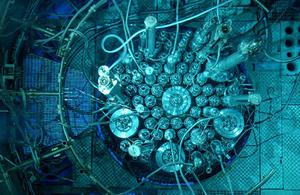
The separation of the Mo-99 from the targets is performed at 4 centres: at MDS-Nordion in Kanata, Canada; at Covidien in Petten, the Netherlands; at IRE in Fleurus, Belgium and at NECSA in Pelindaba, South Africa.
The Mo99/Tc-99m generators are then assembled and sold by a number of companies.
The NRU reactor produces about 40% of the required Mo-99. The three European reactors together produce about 35% and the remaining quantity is produced in South Africa and smaller producers. Given the operating schedule of the European MTR reactors involved, a coordinated European production calendar is fixed, ensuring a continuous production – provided, of course, that there are no incidents with the reactors or the processing facilities.
Last August, the HFR reactor in Petten was supposed to be operational. Maintenance was under way, as scheduled, at the BR2, OSIRIS and NRU reactors. However, due to the discovery of corrosion and possibly a small leak in the primary circuit of the reactor, the HFR was not restarted. Independently, an incident occurred at IRE, during which a significant quantity of Iodine-131 was released through a ventilation stack, luckily without any adverse health effect for the population.
Suddenly, no major irradiation facilities where available and one of the two European separation facilities was out of action. The remaining (Covidien) reactor was stopped because of lack of irradiated targets.
After a few days, production resumed in Canada, but mainly for the North American market. Thanks to the efforts made by the OSIRIS and BR2 reactors to irradiate a maximum amount of U targets, Covidien was able to resume operation in October and IRE in November. The HFR however, is not scheduled to restart before May 2009. Due to this crisis, hundreds of thousands patients were denied diagnostic imaging tests based on the use of the Tc-99m radioisotope. Some of the tests could be performed by alternative techniques, however, such as PET (see also ENS NEWS N° 14). Other tests were carried out using less adapted radioisotopes. The production of most, however, had to be postponed or cancelled.
The crisis points to the alarming lack of production facilities for producing medical isotopes. In Canada, the NRU reactor started operating in 1957. It was scheduled to close down in 2005. AECL, therefore, designed and constructed two reactors dedicated to isotope production, Maple 1 and 2, which were scheduled to be fully operational by that time. Due to design errors, operation of the reactors would have been unsafe. After several years of tests and design changes, the operation of the reactors was forbidden by the safety authorities in 2008 and the reactors are being dismantled. Due to this, the operating licence of the NRU reactor is expected to be prolonged after 2011, even though it is now one of the oldest reactors still in operation.
In France, OSIRIS will be shut down when the Jules Horowitz reactor becomes operational. There should, therefore, be no interruption in irradiation activities in France. In Belgium, the BR2 reactor is scheduled to operate at least until 2016 and there seems to be no technical reason to stop operation before 2020 at the earliest. At that time another multifunctional irradiation facility (MYRRHA or similar – see also ENS NEWS N°21) should be able to ensure continuous Mo-99 production. The Netherlands are in the process of designing PALACE to replace the HFR reactor.
A characteristic of the current isotope production scenario is that none of the irradiation facilities would be commercially viable thanks to isotope production alone. Hence, no private company are considering building and exploiting a nuclear reactor for isotope production alone. In short, the isotope production in Europe - and partly in the rest of the world - is mainly subsidised by the Dutch, Belgian and French taxpayers. In my opinion, it would be more than fair to share the cost of irradiation for medical isotope production at the European level, rather than allow taxpayers in the countries in question to continue footing the bill for the production of radioisotopes that make an absolutely essential contribution to global human healthcare.
http://www.euronuclear.org/e-news/e-news-23/nuclear-institute.htm

Following the formation of the Nuclear Institute in the UK, on 1st January 2009, the former education and training interests of BNES and the Institution of Nuclear Engineers are continuing with a new NI E&T committee chaired by Michael Grave, a NI Trustee and ENS General Assembly member. The committee comprises members from across the Nuclear Institute’s membership and also key stakeholders representing bodies such as industry, regulators, skills development agencies, the Nuclear Decommissioning Authority and academia. Skills are clearly a top priority as the UK and many other countries wrestle not only with meeting all engineering needs in the future but also the nuclear cycle activities of new build, operation, fuel cycle, decommissioning and waste management. It is, therefore, of great benefit to NI E&T to have representation from Cogent, the energy sector skills council that includes the nuclear sector. The attached paper was prepared by Clive Smith, the Nuclear Director at Cogent, who is also a member of NI E&T committee (ENS Editor in Chief).
The ability to apply nuclear and radiological technology has a key role in the health sector, plays a principal part in national defence and is vital to the operation of the UK’s nuclear power stations and the decommissioning and clean-up of nuclear facilities.
The ability to manage the technology and to innovate is also fundamental in ensuring that the UK can build new nuclear power stations and sustain the clean energy programme the world needs now more than ever.
Employers have recognised that the ongoing supply and development of high-level science and technology skills is an imperative. The Cogent Sector Skills Council was formed with the support of the industry to develop strategic, targeted action to meet nuclear industry skills needs. Throughout its developing work programme key employers and professional bodies have taken a lead role in driving forward Cogent’s workforce development agenda.
Indeed, skills have been on the agenda for some time. In 2000, anxiety about the availability of skilled people in all nuclear and radiological roles resulted in the publication of the OECD report Nuclear Education and Training – a cause for concern. Nationally, in 2001 a Health and Safety Executive (HSE) report on nuclear education in British Universities identified a situation of an ageing academic workforce and no undergraduate courses with significant nuclear content. Around the same time, in response to skills shortages across all sectors of industry, the Government was underway with its plans to establish Sector Skills Councils. Cogent was selected by a nuclear employers’ skills group as the most appropriate body to represent the skills needs of the nuclear industry.
Upon its formation Cogent set about an analysis of the availability of Suitably Qualified and Experienced Personnel (SQEP) – responding to the industry’s need for fresh intelligence around on skills and the size of the challenge.
Through its research into nuclear skills via its Sector Skills Agreement process, it discovered a number of skills shortages, mainly in specialist resources such as Radiation Protection, Safety Case authors and some of the computational disciplines. Skills gaps were also identified in the skill sets of the existing workforce: for instance in project management, particularly among the people working on the sites which were moving into the decommissioning and clean-up phases.

There is an over supply of people at SVNVO level 1 and below compared to the number of jobs at that level in the Nuclear Fuel Processing Industry.
Indeed Cogent SSC and Skills Academy research has identified that over the next ten years the nuclear sector will need to recruit between 5,900-9,000 graduates and 2,700 to 4,500 skilled trades just to meet the ongoing needs of decommissioning, power generation, the fuel cycle and defence. In addition, there’s a further recruitment and training need to deliver the new build programme efficiently and safely.
Resulting from this analysis was the Cogent Sector Skills Agreement (SSA): aimed at securing the range and level of skills necessary to secure a sustainable future for the industry.
An essential and exciting aspect in delivering on this agenda is the establishment of the The National Skills Academy for Nuclear, a subsidiary of Cogent. Together Cogent and the Skills Academy (alongside employers who lobbied for two years for this specialised centre of excellence), are driving a strategic skills programme. It’s a plan that takes on board the totality of the education pyramid: from schools through to apprenticeships and further education colleges, and links to graduate and post-graduate programmes.
With employers, Cogent develops the National Occupational Standards, qualifications (including reform of the system) and produces the Labour Market Information (across its sector) to supply the evidence needed to inform its work.
Cogent’s sectoral approach is also aimed developing a wider talent pool across the science-using industries to support transferability of skills (including oil and gas and downstream petroleum).
The employer-led Skills Academy is focused entirely on nuclear industry training and skills.
The National Skills Academy for Nuclear acts as the leading body for an employer-led programme to develop a standardised and coordinated approach to education, training and skills in the Nuclear Sector. Through a regional network of training clusters the Skills Academy identifies, develops and quality assures local high quality provision, creating “centres of excellence” for the delivery of Nuclear specialised training, enhanced where appropriate to respond to specific skill gaps identified by nuclear employers.
The Skills Academy is structured around the five main areas of the nuclear activity across the UK (Northwest/Northeast, Southeast/East, Southwest, Scotland and Wales, and a Regional Training Cluster (RTC) is being established in each region. Within each regional training cluster there will be a hub which will encourage the development and delivery of quality training by Skills Academy assured providers.
Where possible, the Skills Academy will build on existing good provision in the region and will work with current providers to raise the standards and ensure they are responding to employer demand. The Skills Academy will work via a variety of models: for example schemes housed within existing training centres, on employer sites, new purpose built facilities and so on – the physical presence will be dependant on what is needed for each region.
The Skills Academy is currently quality assuring interested providers for each of the regions against rigorous standards to ensure the highest quality provision is obtained.
In the Northwest/Northeast Region the Head Office of the Skills Academy has been opened in the Cockermouth area of West Cumbria, and upon building completion, Energus (previously known as the Nuclear Academy), will be a lead delivery arm for the region. The Springfields Engineering Apprentice Training Centre has recently been announced as a delivery centre for the Skills Academy delivering engineering training.
In the Southwest, Bridgwater College has been chosen to act as the RTC hub.
In Wales the hub will be a virtual arrangement linking together Skills Academy assured provision.
The Southeast and Scotland regions are currently under development.
At the end of May TTE Training Limited (Training Tomorrow’s Engineers), the North West’s leading provider of Engineering and Laboratory Operations Advanced Apprenticeships, was appointed as the first provider in the Academy network. The Academy is working with a number of providers who are currently working through its rigorous quality assurance procedure. This process is fundamental to ensuring a quality standard of training across the nuclear sector.
The Skills Academy is addressing the current fragmented system for the delivery of training, which has no common standards and suffers from significant duplication. In effect, each employer trains his/her own staff, evaluating them against his/her own standards, giving rise to inefficient use of both employer and public sector investment. In the first four years the Skills Academy Quality Assurance scheme aims to confirm provider status on 35 providers and allow employers to choose providers with confidence.
The skills pyramid
Through Cogent and the Skills Academy, targeted activity aimed at ensuring ongoing SQEP provision in both now and in the future, exists at all levels of the education pyramid.
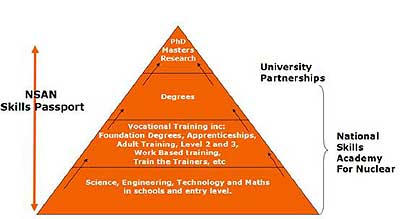
Aimed at young people and advisors, Cogent’s Career Pathways is a sector-wide web initiative that provides a one-stop-shop information service via the web. It holds information on career progression, jobs, training and salaries in the nuclear industry. For example, career pathways have been developed with employers who have also provided real life case studies. www.cogent-careers.com
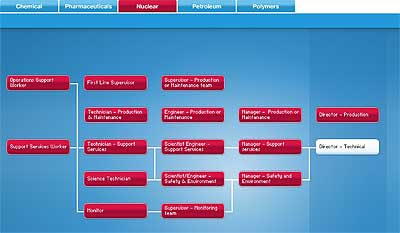
Energy Foresight is a programme offered via and funded by the Skills Academy that supports delivery of the module in the Key Stage 4 National Curriculum for science, which deals with radioactivity and related issues. The programme has been designed in conjunction with the DCSF, QCA and the awarding bodies. www.energyforesight.org The Skills Academy is also supporting the RADwaste programme which is a learning resource to enable students to examine the issues of safe management of nuclear waste
The Skills Academy is working in partnership with the Science, Technology, Engineering and Mathematics Network (STEMNET), to encourage more employees within the nuclear industry to become Science and Engineering Ambassadors (SEAs). The aim of the SEAs programme is to support teachers in delivering the STEM curriculum and to inspire and enthuse young people into science, technology, engineering and maths and
In collaboration with the Nuclear Decommissioning Authority (NDA), the Skills Academy has introduced a Community Apprenticeship Scheme to enable supply chain companies working within the nuclear sector to take on apprentices for the first time or develop additional apprentice skills for their business. This will ensure continued and better resource capability to support the Nuclear Site Licence (SLC) companies to achieve their delivery objectives safely, to time and on cost.
Cogent’s skills programme for the existing nuclear workforce is based on the modular and progressive acquisition of skills, enabling individuals in the workplace to gain recognition for their learning at a pace that suits both them and their employers. Module development is underway to provide a skills pipeline from entry-level qualifications through to senior management, professional and technical qualifications at levels 4 and 5 (HNDs and Degrees).
A fundamental activity within the upskilling programme is the generation of the Core Roles. This is being undertaken by the Skills Academy, Cogent and employers. This process is being driven by an “Occupational and Functional Map” produced by Cogent, and has already provided a greater understanding of the emerging roles related to decommissioning activity. It also recognises the work already underway by the NDA, British Energy and other employers to reduce the overall number of roles and descriptors in current use. A detailed listing is in production, which, in the first instance will be focused on those most heavily populated occupations. These Core Roles will be made available to all employers, and will be circulated annually to test their currency.
The Nuclear Industry Training Framework (NITF) is aimed at supporting the sector to be world-class and forms an important part of qualifications reform. The Framework will link Core Nuclear Job Roles and qualifications/training programmes – initially for existing whole qualifications and then modules as they become available. It will be underpinned by an IT platform, the NITF and core roles form an integral part of the Nuclear Skills Passport (see below).
The outcome will be a clear development plan which sets out areas for learning. This plan will be linked to qualifications and modules where appropriate, with the methods of training and development clearly set out. Currently the NITF is based on full qualifications (stage one). Cogent and the Skills Academy are now developing modular qualifications, (stage two) which matches the way employers train their staff and better meets their needs. This will provide employers with bite-sized units of training targeted at particular skills needs, delivered more flexibly to accommodate a Nuclear Industry environment.
Nuclear Industry Training Framework, example of the Decommissioning Operator Core Role
![]()
Common Pathway
|
Entry / Base Qualifications |
Secondary Qualifications |
Generic Site, Plant and Job Specific |
|
|
|
|
|
|
Site & Employer Specific |
|
|
Nuclear Sites Unescorted Access Award for Nuclear Industry Awareness |
Waste Management N/SVQ L2 |
Certificate in Manual Handling and Working at Heights (MEWP) |
|
Information Technology L2
|
|
|
As part of this upskilling and reskilling programme nuclear employers are shaping brand new vocational Foundation Degrees to suit their needs and to support the development of a progression path for apprentices and upskilling across the sector. In collaboration with the Skills Academy, the universities of Central Lancashire and Portsmouth are jointly developing and delivering the leading-edge Foundation Degrees that are needed by the nuclear sector to support job progression opportunities. The universities will work with the Skills Academy and other partners to provide Foundation Degrees for school leavers, new entrants and individuals retraining. In Scotland the University of Highlands and Islands is leading on the development of Higher National Diplomas to fulfil a similar role. There are also important university alliances – for example the Nuclear Technology Education Collaboration (NTEC) which is made up of 11 Universities and Higher Education Institutions delivering Nuclear MScs in operations, maintenance and decommissioning and clean-up.
Finally, the Nuclear Skills Passport scheme is a critical element in the strategy to upskill and reskill the nuclear workforce. A joint Cogent and Skills Academy work programme, the web-based Passport platform, will provide all employees and contractors within the nuclear sector, including those from large employers and SMEs, with a physical record of all their industry specific training and qualifications. The passport scheme will lead to improved performance by providing a management system to assess training against agreed standards and the recording of industry/role specific competencies.
This standardisation will enable a portability of employment between SLC sites, which will help to address the peaks and troughs of work/demand across the industry. The scheme will also aid licensees in the demonstration to the nuclear regulators that all workers are suitably SQEP, by providing a physical system for proof of skills.
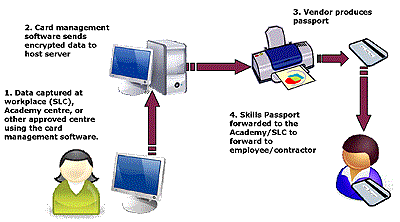

The scheme will enable a secure management of training records of all transferable industry training records and provide a facility for competence management including:
Career pathway.
Nuclear Industry Training Framework implementation – which will link qualifications and training to job roles. Learning will be broken down into bite sized chunks (assessed units) which will be converted to assessed units by an awarding body.
Accreditation of Prior Experience & Learning (APEL).
Skills Gap Analysis and Training Signposting.
Verification process for all training records input onto the passport system.
By recording training qualifications such as the new “Nuclear Sites-Unescorted Access for Work” training standard at all nuclear licensed sites, the Passport will save time and money on repeat training.
Cogent and the National Skills Academy for Nuclear, with the support of the industry are meeting the need for training that is developed by employers, for employers and is delivered in a way that best meets their needs.
It’s a collective and standards-based approach aimed at enhancing the skills base of a world-class sector as it moves into a dynamic and challenging future.
Cogent is the Sector Skills Council for the chemicals, pharmaceuticals, nuclear, oil and gas, petroleum and polymer industries. It is the voice of employers in these sectors and is working with them to create a skills environment that businesses need to be innovative, competent, productive and sustainable. Cogent currently represents the interests of more than 19,000 businesses employing around 955,000 people.
This paper first appeared in the publication Nuclear Future, Volume 4, 2008. ENS NEWS is very grateful to its author, Clive Smith, Nuclear Director at Cogent and a member of the NI E&T Committee, for granting it permission to reproduce the article in full.
http://www.euronuclear.org/e-news/e-news-23/status-and-patterns.htm

R. Khan, H.Böck
Vienna University of Technology, Atominstitut, Vienna,
Austria
The problem of a lack of qualified nuclear personnel has been recognised globally since the nineties due to the retirement of ageing workers, a lack of adequate replacement due a to a negative public perception of nuclear and a lack of interest from young people in starting a nuclear career. Europe, as an active promoter of nuclear education, has experienced this situation even in member countries which pursue a strong nuclear power programme. Therefore, to solve this problem, Europe along with the support of all stakeholders of nuclear technology, has taken a wide range of measures. These measures include the development nuclear education programmes at universities/research institutes, enhancing students’ and professors’ exchange programmes, and improving public information in the nuclear field at a local and European level. This paper describes the status and trends of nuclear education in European countries at both national and regional level. Furthermore, it refers to best practices being carried out in EU member states and summarises recommendations for further improvement.
Nuclear technologies play an increasingly important role in our everyday lives. For example, in nuclear medicine, nuclear techniques and radioisotopes are used for diagnosis, therapy and research. In many cases there is no alternative treatment. Agriculture also utilises radioisotopes in soil and water management, crop nutrition, plant breeding and genetics, animal production and health, insect and pest control, food and environmental protection.
There are 39 research reactors in Europe [8] being used in nuclear engineering teaching, training and research, reactor fuel development and radioisotope production. There are many other applications of research reactors, which are summarized in [16].
The IAEA Annual Report (2004) states that there are 1122 facilities operating under safeguards around the world. Taking this figure into account, the efforts needed to develop, sustain and promote nuclear applications [13] can be estimated.
The practical application of all the above mentioned fields and techniques, with their associated nuclides and equipment, obviously require a large number of qualified nuclear staff (i.e. nuclear engineers, radio-chemists, health physics staff). Clearly, the EU must continue to benefit from nuclear technologies and, therefore, needs properly trained professionals to work in these areas.
The present survey is divided into two parts. The first part surveys the present national & European status of nuclear education, while the second part describes the best practices being carried out and outlines some recommendations for further improvement of nuclear education.
Following some relevant national programmes and European efforts performed to improve and reinforce the teaching and training in Nuclear Education are presented. It is not possible, due to the limits of this paper, to cover all the existing programmes in Europe.
Austria does not operate any nuclear power plants. Its only interest to keep nuclear education alive is related primarily to environmental, health and safety concerns arising from nuclear power plants in neighbouring countries. In 1978, the legislation prohibiting a nuclear power plants on the Austrian territory was adopted as a result of a referendum, in November 1978, rejecting the nuclear power plant project Zwentendorf. However, the Austrian Research Centre Seibersdorf, University of Salzburg, University of Vienna have some disciplines of nuclear education. The Atominstitute of the Austrian Universities (ATI), which hosts a TRIGA Mark II research reactor, is the main contributor to nuclear education in the country and also Europe. The ATI is concentrates its research activities in the following fields [1].
Electron and X-ray physics
Nuclear and nuclear astrophysics
Nuclear technology, data processing & electronics
Low temperature physics & superconductivity
Neutron and solid state physics
Radiochemistry
Radiation protection and dosimetry
ATI runs three types of main activities - national, regional and international. National activities mainly cover academic and training programmes (i.e. Master and PhD). The European activities involve the participation in the ENEN Master of Nuclear Engineering and NEPTUNO project. International activities include the research contracts with the IAEA.
Figure 1 shows the evolution of students studying nuclear subjects (nuclear engineering, reactor physics and kinetics, radiation protection) offered at the ATI. The reason for this growing trend is the awareness level of students in the nuclear field and their interest in the nuclear discussion between Austria and its neighbouring countries.
European networks like ENEN or NEPTUNO to promote nuclear education and training attract the students to nuclear subjects. As a member of the ENEN Association (www.enen-assoc.org), Austrian students participate at the ENEN activities like the Eugene Wigner Course for Reactor Physics Experiments. The Public Information Materials Exchange PIME, an international conference organised by European Nuclear Society (ENS) to convince the public through print and electronic media of safe and efficient use of nuclear technology, also helps to raise the nuclear student enrolment rates in universities.
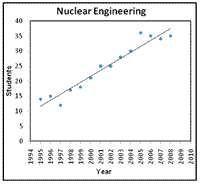 |
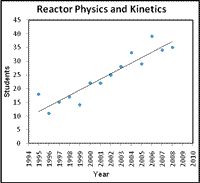 |
Figure 1: Historical view of nuclear education at ATI since 1995
The Atomic Energy Commission (Commissariat a l'Energie Atomique - CEA) was set up in 1945 and is the public R&D Corporation responsible for all aspects of nuclear R&D. Presently, the CEA operates 14 different types of research reactors, all started up between 1959 and 1980. About 17 units dating from 1948 to 1982 have been shut down or decommissioned [1].
Diploma in Nuclear Engineering: It is a typical French engineering degree equivalent to a Masters. It includes 5 to 9 month internship in the industry or an R&D organisation. Also special diplomas in nuclear medicine and radioprotection, e.g. a diploma in nuclear medicine, radio-pharmaceutics and nuclear medicine are awarded. The radioprotection diplomas involve the training of technicians in control, safety and the transportation of nuclear materials.
Masters and Doctoral Programmes: In close partnership with CEA labs and French universities, it offers both programmes in the following fields of:
Nuclear R & D, nuclear engineering
Fundamental physics and chemistry
Material science
Environmental science
Biology and medicine
Software science and simulation
Nanosciences
Fusion
About 40% trainees from CEA, 55% from nuclear industry & Small and Medium Enterprises (SMEs) and a few percent of international trainees participate in the professional training programmes. Some training courses award certificates. Here are the soecific areas of training offered:
Radioactivity measurements
PWR, operation, components, safety
Nuclear cycle, waste management
Materials and physico-chemistry
Decommissioning
Security, nuclear safety, quality management
Radioprotection
Radio-pharmaceutics, molecular biology, biochemistry
Renewable energy systems
Assistance for PhD students & managers
Innovation management
Education trainings
The INSTN cooperates with international organisations (IAEA, ENEN, EMIL, NEPTUNO etc) in education and training programmes. The other active nuclear education institutions involved are:
Grenoble Institute of Technology
Cadarche Research Institute
Many German universities and colleges of higher education were heavily engaged in nuclear education from 1970s to 1980s. Several important events (e.g. the Chernobyl accident, the anti-nuclear movement, etc.) politically affected nuclear policy. In 1986, the government passed a resolution to phase out nuclear power in the future. The R&D projects aimed at high-temperature gas-cooled reactors and fast breeder reactors were terminated after 30 years of promising work. The firm decision of the coalition government of 1998 was taken to initiate the nuclear phase-out programme and replace nuclear energy mainly with renewable energy sources until 2020.
The Alliance for Competence founded in April 2000 following the recommendation of a high ranking Commission under the Federal Ministry of Economy and Technology fixed the strategic goals of this Alliance as follows:
Evaluation of the evolution of training capacities and job development in the nuclear technology sector
Enhanced cooperation with universities and support of international initiatives (e.g. ENEN, WNU)
Co-ordination and concentration of the activities in publicly-funded nuclear safety and repository research
Support for qualified young scientists through third-party funding
Participation in the further development of international safety standards (EU, IAEA, OECD/NEA) but without government funding
The Alliance for Competence estimated in a survey that about 1200 more specialised staff will be needed until 2010 [5].
This trend was stabilised by the new government formed in autumn 2005, which kept the nuclear policy unchanged. On the other hand, due to the persistently weak economic situation in Germany and relatively high electricity costs compared to other European states, awareness of the need for an economical and reliable energy supply in the country has recently increased. This response renewed the discussion on the nuclear energy option.
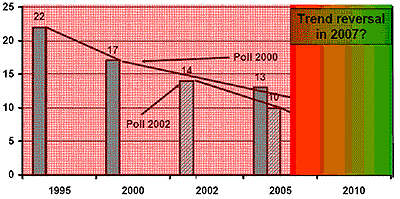
Figure 2: Trends of decline and relative stability in nuclear education courses between 1995 & 2010 [1]
For higher scientific and engineering education, a number of universities (including technical universities) and Colleges of Higher Education play a key role. Universities establish strong links between education and research. They offer diplomas and/or Masters degrees (minimum of 5 year study) and are entitled to award PhDs. On the other hand, institutions like specialised colleges focus on transmitting knowledge and skills for specific professions and offer diplomas ( “FH” = Fachhochschule) after 4 years of study. But they can not award PhD degrees.
All German universities offering nuclear education courses have changed or are changing their diploma programmes to a bachelor/masters programmes, but the general approach toward nuclear education remains unchanged. The future standard is a nuclear Masters of 3 or 4 semesters following a BA in engineering or natural science. The PhD programmes strongly link the universities with research centres.
These are the main centres of competence in nuclear technology in Germany:
In North Rhine-Westfalia, the Forschungszentrum Jülich and the University of Aachen are supported by RWE and GNS
In the Eastern part of Germany, the centre of competence is the Forschungszentrum Rossendorf and the universities of Dresden and Zittau/Görlitz, with the support by Vattenfall
In Bavaria, the Technical University of Munich and the GRS are supported provided by E.ON
The centre of competence in Southwest Germany consists of the Forschungszentrum Karlsruhe (FZK) Karlsruhe, Institute of Technology (KIT) , the ITU (Institute for Trans-Uranium Elements, Joint Research Centre of the EU), and the universities of Karlsruhe, Heidelberg, and Stuttgart, with the support of EnBW
The main topics of research being carried out in the Germany areas follows[5]:
. Safety research for nuclear reactors
Investigation of severe accident phenomena
Analysis of sequences of design basis and design extension conditions
Application to operating power plants
Improvement of off-site nuclear emergency management
. Safety research for nuclear waste disposal
Characterisation and immobilisation of nuclear waste
Reduction of radio-toxicity
Long-term safety of nuclear waste disposal
Transfer of R&D results to construction and operation of repositories
Radiation protection research
. Maintenance of competence / training / teaching
Operating nuclear power plants
Decommissioning nuclear power plants
Construction and operation of repositories
It should also be mentioned here that recently a number of professorial chairs at various German universities in the field of nuclear technologies have been or are being filled.
Hungary operates four VVER 440/213 nuclear power plants, which provide almost 40% of the current electricity demand. Construction started between 1974 and 1979, and operation between 1982 -1987. Due to its excellent operation record the Hungarian parliament’s economic committee decided to initiate a 20-year life extension project for the Paks NPPs (otherwise these NPPs would have had to close after 30 to 40 more years of operation).
The country relates nuclear education and training workforce demand to the construction of new NPPs and the operation and future of the existing nuclear power plants. Students specialising in nuclear power, radiochemistry, and nuclear measurement techniques have been educated at the Budapest Technical University and the KFKI research centre within the framework of technical and scientific educational programmes. With the IAEA's assistance, a nuclear maintenance centre was built and a new generation of instructors was trained as part of a project to improve the nuclear plant's professional training system and conditions. Future training needs are tied to future nuclear developments, including decommissioning, life extension, and the construction of new plants.
Hungary implements nuclear education as part of general curriculum of secondary schools for both nuclear and non-nuclear students. The recommended curriculum for secondary schools includes basic topics of structure of nucleus, radioactivity, nuclear fission and fusion. After secondary education, a certain number of students are financed by the state while the rest have to finance their education themselves. Until 2005, it took five years of study (equivalent to MSc level) for both engineers and scientists to qualify. After the 2005, the “Bologna Process” was newly implemented in universities for academic training. Since 2005, (engineers) and 2006 (for all students), universities started the three-year long BSc degree courses and two-year MSc degree courses. The following universities currently offer nuclear education for different applications [1]:
Budapest University of Technology and Economics (BME)
The University of Debrecen
The Roland Eötvös University Budapest
Semmelweiss Medical University Budapest
Pannon University of Veszpren
Other than these universities, the Paks NPP has its own education and training centre. This centre has two main training facilities, a full-scale simulator for operator training and a Maintenance Training centre for technicians and maintenance workers.
The Italian nuclear programme was largely stopped by a referendum in November 1987, about 18 months after the Chernobyl accident. Again in 2004, a newly-adopted Energy Law opened up the option of a joint course of action with foreign companies in relation to nuclear power plants and importing electricity from abroad. This happened due to clear change in public opinion, especially among the young generation favouring nuclear power for Italy. Today, Italy is the only G-8 country without its own operating nuclear power plant. As more than 10% of its electricity is imported, Italy invests in the construction of foreign NPPs, such as those at Flamanville/France and Mochovce 3&4/Slovak Republic.
ENEA is the most important agency for applied nuclear research in Italy. It focuses most of its R&D on decommissioning and waste. Basic research continues in order to maintain the nuclear option in the light of climate change concerns.
The number of enrolled nuclear engineering students increased up steadily up until the early 90s. After that, with some variations, the number decreased to an average of about ten per year in each of the Italian universities offering nuclear engineering degrees. The number of the nuclear engineering graduates has increased from about 300 in the early eighties and has stabilised at about 100 in the last few years.
Figure 3 represents the history on nuclear engineering students (graduates) in Italian universities from 1960 to 2001. This trend shows the peak value of graduated students in early eighties.
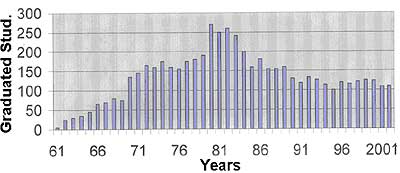
Figure 3: Annual variation trend of nuclear engineering graduate students in Italian universities [1].
The universities have updated their curricula so that well qualified engineers with enhanced knowledge in nuclear engineering can graduate. The board of each nuclear engineering course decided to introduce new topics covering also innovative reactors and nuclear fusion, radiation protection and engineering. It was also decided to retain former nuclear engineering courses formation that gave students a good basic preparation and a systematic approach to solving complex engineering problems. From a research point of view, Italy tries to operate mainly on an international level (ENEN, NEPTUNO). On a national level the CIRTEN Consortium is in charge of co-ordinating nuclear education and training programmes in order to avoid the risk of losing nuclear competences and to train young nuclear engineers.
The “Bologna scheme” of education has been implemented at all Italian universities. This scheme is based on European credit system (ECTS), which needs three years (180 ECTS) for first level degree (Bachelor Degree), two years (120 ECTS) for second level degree (Masters) and three years for a PhD. Currently, the following five universities offer a degree in nuclear engineering (Table1):
Table 1: A list of institutions awarding nuclear engineering degrees in Italy
Institution |
Department |
Degree |
Polytechnico di Milano |
Nuclear Engineering |
MSc. Nuclear Engineering |
Politecnico di Torino |
Energetics (DENER) |
MSc. Energy & Nuclear Engineering |
University of Pisa |
Mechanical Engineering and Nuclear Production |
BSc. Engineering in Industrial and Nuclear Safety, |
University of Palermo |
Nuclear Energy |
MSc. Nuclear Safety & Tech. Engineering |
University of Roma |
Energy |
MSc. Energy Engineering |
It should be mentioned that the University of Pavia has been operating, for many years, a 250 kW TRIGA Mark II reactor at the Laboratorio Energie Nucleare Applicata (LENA), which offers a large number of high-level specific nuclear courses. It is the only university in Italy with direct access to a research reactor. For some internal reason this university is not a member of CIRTEN, but LENA could play a major role in the nuclear education and training in Italy.
Lithuania operated in the past two 1500 MWe RBMK reactors (Ignalina 1&2). Due to EU safety concerns, both units were requested to be closed as an entry requirement to the EU. Therefore, unit 1 was closed in December 2004 and unit 2 will close at the end of 2009. Lithuania has one operating nuclear power plant (RBMK, Ignalina-2) generating net power 1185 MWe, supplying 70% of the total consumption. A National Energy Strategy was endorsed in 2007 for the building of a new NPP in Lithuania, in 2015. A decree endorsed by the Lithuanian Parliament in June 2007 recommended the construction of a new NPP in cooperation with Latvia, Estonia and Poland.
The Kaunas University of Technology (KTU) requires four years for a bachelor degree and two years for an MSc in nuclear engineering. Figure 4 shows the history of nuclear engineers produced at KTU from 1978 to 1986 and the history of nuclear specialists graduated between1995 to 2007. To meet this new demand the following developments are in progress:
A national programme for preparation of highly-qualified nuclear engineers (specialists) during the period 2008 – 2015, initiated by the Ministries of Economy and Education & Science
Two new study programmes in nuclear engineering (at Bachelor Masters levels) have been initiated at the Kaunas university of technology;
A new Bachelor level study programme in nuclear physics has been established at Vilnius University
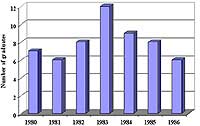 |
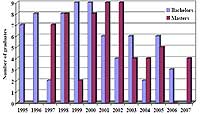 |
Figure 4: The history of nuclear engineers qualified from KTU from 1978 to 1986 [1].
Figure 5 indicates the personnel employed at the currently operating NPP Ignalina-2 and the workforce situation when it will be closed. It shows that people working in the Ignalina-2 NPP will continue the decommissioning process and remaining personnel will be available for the new power plant construction project.
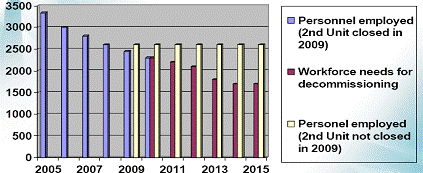
Figure 5: Plan for current and future NPP staff changes [1]
Russia has six decades of nuclear power history. After Chernobyl, the government minimised its support due to public pressure, which caused a mass departure of specialists from the nuclear industry. This was followed by a drastic reduction in technical service personnel, moral ageing and physical wearing of the equipment park. For example, in the 90’s, the Kurchatov Institute lost about half of its staff. Other scientific institutions have simply disappeared. This situation also affected competition in the nuclear field and other technical professions. Parallel to this, the young generation showed growing interest in emerging fields of economy and law, which led to a further decline in nuclear education. The collapse of the Soviet Union led to some research centres, important to the whole picture, to break up and become much weaker. These centres include the Kharkov Physics & Engineering Institute in Ukraine (radiation material science), the Belarus Nuclear Centre (originally the centre of fast reactor development), the Kazakhstan experimental base with its unique pulse reactor and others.
A recent analysis of the age of nuclear specialists in Russia has shown that over a half of the country’s nuclear R&D professionals are older than 50. The number of young people (up to 30 years old) active accounts for only 10-15% - and this age group has reduced 2-3 fold in the last 15 years, while the age group over 60 has increased by the same factor. The situation in the Kurchatov Institute is almost similar. It should be noted that in nuclear industry, where the salaries are considerably higher, the situation is less critical: the rate of workers over 50 makes 20- 30%, and workers younger than 30 are about 20% [6].
The main reason for the interest of students in nuclear careers are the Russian R&D Institutes of the RFAAE and scientific departments at nuclear power plants. Nearly 800 students graduated with MEPhI annually and find jobs in nuclear science and industry. Annual graduation rates for specialists in nuclear engineering from the leading Russian universities during 1999–2001 are shown in Figure 6.
OINPE: Obninsk Institute of Nuclear Power Engineering.
TPU: Tomsk Polytechnical University.
USTU: Ural State Technical University (Ekaterinburg).
NSTU: State Technical University (Nizhnyi Novgorod).
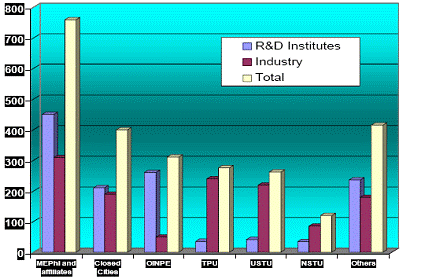
Figure 6: Amount of alumni signed on for nuclear enterprises during 1999–2001[1].
Russia has survived the “crisis decade.” An increase of about 1.5% in nuclear energy production was observed from 1998 to 2003. Further improvement has occurred since then [6]. This was made possible because the Russian nuclear sector has managed (though with considerable losses) to preserve its organisational unity, science base, high level of technological expertise and potential. The principles laid down during its establishment, including those relating to scientific knowledge management, have proven to be highly sustainable in crisis conditions.
The educational system for nuclear engineering, like that in any other knowledge area, includes training activities that are only limited by Russian legislation. Figure 7 show that the nuclear engineering education system is a multi-level structure oriented towards the possible needs of industrial sectors.
Both forms of education system (i.e. the specialists training and two-step education systems) are being implemented simultaneously at MEPhI. Throughout the first five semesters of the specialists’ training course, students study the fundamental concepts of physics, mathematics, and basic engineering and computer-associated disciplines. The next four semesters are devoted to specialisations and to in-depth learning of special engineering skills. The training for nuclear students starts as of the sixth semester. Compulsory participation in the training research takes place under supervision of highly-experienced instructors from MEPhI or at leading nuclear R&D institutes. The practical experiments that accompany practically all profiling courses are given greater importance.
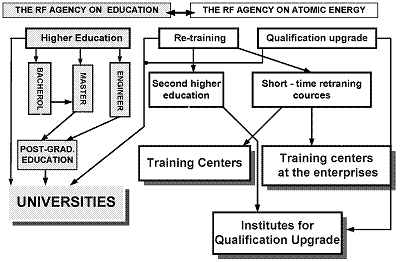
Fig. 7: Structure of the nuclear engineering educational system in Russia [6].
The Russian higher education institutions that are presently involved in training specialists in nuclear engineering [6] are as follows:
Moscow Engineering Physics Institute (MEPhI) – the basic university of the RF Agency on Atomic Energy (RFAAE)
three MEPhI affiliates at the closed cities
four educational institutes at the closed cities
particular departments at 12 Russian universities
post-graduate education at the above-mentioned universities and on the basis of more than 20 R&D institutes of the RFAAE
re-training and qualification upgrades at six qualification upgrade institutes of the RFAAE and at special departments at certain universities
Four military universities
The “Slovakian Electricity State Utility” (SE) operates four VVER 440/213 NPPs in Slovakia at two sites, in Bohunice and Mochovce. In February 2007, SE announced that Italy will finance the completion of Mochovce 3&4, partially finished VVER 440/213 reactors that are scheduled to be completed by 2012 and 2013.
The Faculty of Electrical Engineering and Information Technology (FEI) of the Slovak University of Technology (STU) offers two branches of nuclear education i.e. Nuclear Power Engineering and Material Science Engineering. It offers undergraduate (BSc), graduate (MSc), post graduate (PhD) courses, as well as training programmes related to nuclear technology.
It also organizes IAEA regional training courses for safety, management and the use of research reactors for young experts from various European countries. STU, in collaboration with three other universities (Budapest University of Technology, the Czech Technical University in Prague and the Vienna University of Technology, VUT) has organised for several years the Eugene Wigner course supported by ENEN. The educational trends of STU are shown in figure 8 [1].
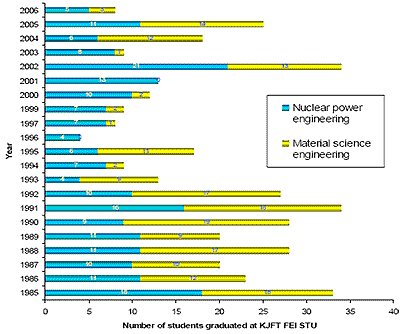
Fig. 8: The trends of nuclear programmes at STU
The institutions of the country which are involved in nuclear education are the Slovak University of Technology and the Slovakian Nuclear Power Plant Research Institute (VUJE). The former awards academic degrees, while the latter is a training centre that offers both theoretical preparation and the practical training of NPP personnel on simulators.
The educational programme on offer in the UK is presented in figure 9, which shows the existing academic courses with their duration [1].
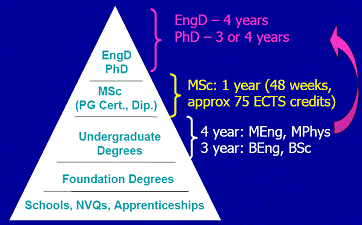
Fig. 9: Academic courses (undergraduate & postgraduate) at UK universities
Over the last two decades, a number of nuclear research courses were ended due to many factors, mainly lack of industry interest, the low rate of student enrolments, etc. The decline in the UK’s R&D manpower available to the industry and in public funding for fission research is shown in figures 10 and 11 [1].
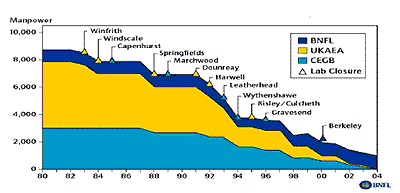
Fig. 10: The decline in UK R&D Manpower available to the Industry and laboratory closures
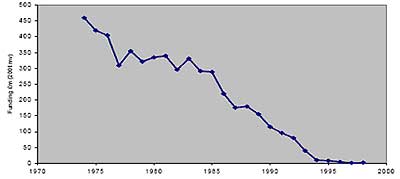
Fig. 11: The decline in UK public funding for R&D of fission research
Recently, the following studies/surveys to determine the status of nuclear education have been made:
HSE/NII Education & Research in British Universities (2002)
DTI Nuclear Skills Group (Coverdale, 2002)
Nuclear Task Force (Ruffles, 2003)
COGENT Nuclear employers survey (2005)
NDA Health Physics Resources in UK Industry (Rankine, 2007)
The 2002 HSE/NII study on nuclear education in British universities concluded that:
If nuclear education were a patient in a hospital it would be in intensive care.
Its health seems to depend more on the enthusiasm of individuals than the commitment of institutions.
Although nuclear courses are taught at 22 of the 130 or so universities in the UK, the level of nuclear teaching is very low at many of them and at seven universities teaching is likely to disappear altogether in the next few years.
Compared to the number of science, engineering and technology students, the number of those following nuclear education courses represents a small percentage.
An increase in the number of courses with a nuclear content at both postgraduate and undergraduate levels has failed to produce a corresponding increase in the number of students.
There is a worrying decline in the already small number of students pursuing 100% nuclear postgraduate courses.
Nuclear education at the undergraduate level has been reduced to the level of “taster courses” within mainstream science degrees.
In many universities the facilities for nuclear teaching are outdated and such an image of decay is unlikely to attract students.
It is interesting to note here that although the UK operates 19 nuclear power plants and decided recently to expand its nuclear park over the next decades with new NPPs - all its civilian research reactors have been closed down, which leaves a vacuum in the possibilities for practical education and training in the nuclear field for UK students. Therefore, the Nuclear Technology Education Consortium (NTEC www.ntec.ac.uk) signed a contract with the Atominstitute Vienna/Austria to carry out two one-week practical training courses per year at the TRIGA Mark II reactor in Vienna for NTEC students.
The need to preserve, enhance or strengthen nuclear knowledge is recognised worldwide and to achieve this ambitious objective networking among nuclear institution is being done. Due to the space limits of this paper, the developed networks (national & regional) are only mentioned in passing. Their details can be found via the web links given below.
EU National Networks
Belgium Nuclear Higher Education Network (BNEN) [9]
Consorzio Interuniveritario per la Ricerca Tecnologica Nucleare (CIRTEN), Italy [12]
Nuclear Technology Education Consortium (NTEC) [10]
EU Regional Networks
European Nuclear Education Network (ENEN) [11]
Nuclear Energy Agency (NEA) [7]
To combat the current situation facing nuclear education and training, some best practices used in member’s countries were studied. These common best practices, which maintain the current status of these entities and ensure the smooth functioning and improved quality of operations, have been discussed in this paper. Furthermore, the recommendations for improving the manpower problem have also been described. These practices can be grouped into following six categories:
It was found that there is imbalance between the supply and demand for a nuclear work force in many member states. In many OECD member countries, the important factor that explains the gap here is the low rate of student enrolments, which in turn is due to negative student perceptions. This low enrolment level affects the budget, which affects the facilities offered for nuclear courses and causes a running down of nuclear courses offered. In fact, these two factors (i.e. low enrolment and the number of available nuclear courses) feed each other. This declining in the number of enrolled students is a prime target for remedial action.
To counter this low enrolment trend it has been acknowledged that basic knowledge of nuclear science should be taught at secondary education level. It would be good practice to seek to produce future nuclear graduates by starting at a very basic level. Though this is a long-term goal it will influence the process of nurturing and recruiting the nuclear workforce for the following reasons:
It is easier to attract young people towards nuclear education when they have already some fundamental nuclear knowledge. This is only possible if they already receive a basic understanding at secondary education level. Most students decide about their future career when they have finished secondary education. A basic knowledge of nuclear technology can help them to select this as a future career option. It would also strengthen the decision- makers (politicians, economists, journalists etc) at national and international levels if they were to already possess such basic knowledge of nuclear technology.
The strong link between education and training has been recognised as a means of promoting cooperation between the two. They can be linked strongly by common course content that enables both of institutions to share both theoretical and experimental expertise. Most students enroll in a training course for which they receive an academic certificate. It is clear that there must be common course content so that students having an academic degree in relevant subject with good theoretical background may better retain what they have learned during training
In most of the member states universities are facing a decline in available facilities and faculties. In the workplace the nuclear expert workforce is ageing and many people are expected to retire very soon. Nuclear societies world-wide are concerned about the sustainability of nuclear societies not because of a lack of knowledge, but because of lack of young members to take over from those about to retire. Because it is the industry that most needs a trained work force to keep its facilities going and well operated there is general consensus for industry to provide support beyond current funding levels. The institutional co-operation between academia and industry would help meet the challenge of human resources in the nuclear sector.
It is common practice for governments to give financial support and funding is directed towards education and research as an investment in long-term future planning. Most nuclear scientists/engineers are employed in three broad categories i.e. industry, academia (which includes universities, colleges etc), government agencies and other organisations.
With significant funding support academia can offer more courses to meet demand. Because governments want nuclear courses and strategies to sustain nuclear competence, it is, therefore, the responsibility of governments to devise and implement national policies for sustaining the future nuclear workforce.
Close analysis shows that governments, academia and industries are strongly linked with respect to their goals. The public sector supplies students to educational institutions (academia) and these institutions provide a workforce for industry. In turn, industry provides services to the public and again plays a role in persuading students to opt for a nuclear education. Governments, in the public interest, need to make aware and convince citizens of the importance and interest of nuclear education.
For educational institutions, networking has been widely recognized as a key strategy for capacity building and better use of available educational resources. By networking expertise, information and facilities can be exchanged. On the line of NKM, the networking has become an important element of nuclear education and training. In practice, its benefits have been acknowledged, and networks are being established at all levels i.e. national, regional and global levels. Networking might even become more important in the future, both in terms of the extent and depth of co-operation.
Networking establishes and promotes national and international collaboration in educational and/or training programmes. If there is an essential lack of expertise in one country, then networking can help access to its provision in another country and should be encouraged.
Similar to an industrial product, the quality of education and training is an important measure of the achievement of any academic system. Every education system, like industry, must have its own quality management system. The most important factor, quality management, is at the core of the academic curriculum. To take up the ambitious challenges of offering top quality in nuclear education, new, attractive and relevant curricula, higher education institutions should cooperate with industry, regulatory bodies and research centres. More appropriate funding from public and private sectors is necessary too.
An example of a standard integrated curriculum is that offered by ENEN. The NEPTUNO programme, part of the 6th European Frame Work Programme, integrates European education and training in nuclear engineering, nuclear safety and other nuclear fields with the major objective of securing qualified curricula in nuclear sciences at European universities. It also aims to achieve harmonization, to ensure mutual recognition according to the Bologna Declaration, and to harmonise professional training and accreditation schemes.
As an example, ENEN is focussing on a good quality assurance system for its academic courses using it’s Quality Assurance Committee, which examines the quality assurance practices adopted in partner institutions. The ENEN Master of Nuclear Engineering (i.e. EMSNE) certification meets the objectives and quality standards set by the ENEN Association. This certification is a guarantee that the Masters level education received is of the highest quality available in Europe.
ENEN, on behalf of its members, grants the quality label European Master of Science in Nuclear Engineering if a substantial amount (some 20 or 30) of credits have been achieved at an ENEN-member institution other than the home institution. Typically, these credits might be obtained by performing a project work or Masters thesis and or by enrolling in related advanced nuclear courses abroad.
There is a big difference between governmental and industrial perspectives with respect to their respective interests. Firstly, there is the time horizon. Industries, by necessity, are driven by the business motives and, therefore, they have short term vision (i.e. a few years ahead). Governments, on the other hand, are more driven by the need to act in accordance with the national welfare requirements and obviously have a much longer time perspective (i.e. a few decades or even longer). It is important to differentiate between the actions or the motivations of governments and those of industry. Another difference is related to the scope of R&D that is supported. Industry works in a competitive environment and, therefore, industry driven R&D is more directed towards customising the existing knowledge base, the existing R&D base, to a particular product, goods or services. Government supported R&D is inherently more generic in nature and combined with the long-term objective of addressing the core issue of development.
Beyond the funding issue, industry should provide access to facilities for experimental training for students. Similarly, industry can help by attracting the students. The public and potential students need to be aware that the industry is moving forward. It is also important to note that universities, in co-operation with industry, can attract good caliber students if they offer some career-oriented exciting and innovative educational courses.
As a result of these best practices, the following recommendations can be made:
To reduce the supply/demand imbalance it is recommended to develop more innovative R&D programmes and enhanced university courses. The universities should design and offer attractive academic courses with high quality curricula in order to present a dynamic image of the industry to those looking for career choices. The performance based training of nuclear power plant personnel has been recognised as essential for the successful management of human resources in the nuclear sector. To manage the demand/supply balance the nuclear industry needs to identify what competences it is going to need, in the short-term, as well as the medium- to long-term, and must work with universities to ensure that nuclear courses are in place to meet those needs.
With regards to institutional cooperation, education and training institutions have been considered to be workforce suppliers to industry and other R&D organisations. Their co-operation in providing basic and attractive education and rigorous training play a significant role to meet their specific needs.
The role of government, academia and industries and how they must collaborate is emphasised. Governments should expand their strategic energy planning to increase the level of public awareness of nuclear education, manpower issues and infrastructure. Convincing the public through print and electronic media about the safe and efficient use of nuclear technology will help raise the student enrolment rates at universities.
The EU is urged to facilitate the transferability of education and skills between its member countries, especially in critical nuclear specific disciplines.
Funding is recognised as an important element. It is recommended that both industry and government should think beyond funding support alone towards encouraging nuclear knowledge management and its preservation. Access to national laboratories and industrial facilities should be provided for students to carry out experiments and practical work.
The quality of curricula is a key a element in improving and developing the quality of nuclear education. The educational and training systems must put into practice good quality management systems. A good example in this regards, which has been described in the previous sections, is that of ENEN.
The safety of nuclear installations, waste management and the radiation protection are major public concerns. It is recommended that international initiatives for sharing nuclear safety knowledge through networks, documentation and tools be expanded.
Conclusion
Due to negative public perceptions, the increasingly large number of retirements of qualified workers, minimal governmental planning and a decrease of interest in industry, a lack of qualified personnel for the nuclear power industry has been identified. The European Commission, within its 5th EURATOM Research and Training Programme on nuclear energy, supported the ENEN project as a nuclear model project. The present level of qualified nuclear employees is unsatisfactory in the short term. This paper presented the status and patterns of nuclear education in the member states. By an analysis of best practices being carried out in EU members and the implementation of recommendations put forward we may once again revitalise the nuclear education and training portfolio in the EU.
References
IAEA Technical Meeting on the “Role of Universities in Preserving and Managing Nuclear Knowledge”, 10-14 December 2007, IAEA Hq., Vienna, Austria
H. Böck and M. Villa, ‘Management of Nuclear Knowledge on an international scale using small university research reactor’, IAEA publication, IAEA-CN-153/4/P/28.
World Nuclear Association, web page: www.world-nuclear.org
National Institute for Nuclear Science and Technology (INSTN), web page: www-instn.cea.fr/rubrique-uk.php3?id_rubrique=23
“Public information and education in nuclear science and engineering in Germany” by Fritz P.and Radloff D, www.pacificnuclear.org/pnc/2006-Proceedings/pdf/0610015final00023.pdf
“Nuclear education in Russia: status, peculiarities, problems and perspectives“, by Boris N. Onykiy and Eduard F. Kryuchkov, Int. J. Nuclear Knowledge Management, vol.1, No. 4, 2005.
Nuclear Energy Agency NEA, web page www.nea.fr
OECD publication 2000 ‘Nuclear Education and Training: Cause for Concern?’, OECD / NEA, ISBN 92-64-18521-6.
Belgian Nuclear Higher Education Network, BNEN, www.sckcen.be/bnen
Nuclear Technology Education Consortium, NTEC, www.ntec.ac.uk/
European Nuclear Education Network ENEN, web page: www.enen-assoc.org/
Consorzio Interuniveritario per la Ricerca Tecnologica Nucleare (CIRTEN), Italy, web link: www.enen-assoc.org/en/about/enen-membership/effective-member/cirten.html
“The role of networking for nuclear education” by P. Gowin, Y. Yanev, IAEA-CN-123/05/O/08.
“Trends in nuclear education“ J. Lartigue, T. Martínez, Journal of Radioanalytical and Nuclear Chemistry, Vol. 276, No.3 (2008) 849–855 0236–5731.
PIME 2008 - Defining tomorrow's vision of nuclear energy, www.pime2008.org
IAEA TECDOC 1234 “The Application of Research Reactors”
http://www.euronuclear.org/e-news/e-news-23/spain.htm

The 34th Annual General Meeting of the Spanish Nuclear Society took place in Murcia, from October 29 - 31, 2008. This meeting has become the focal point for professionals and companies active in the industry. More than 500 delegates gathered in Murcia to exchange professional experiences and to participate in a technical programme consisting of two plenary sessions and 25 technical sessions devoted to the most relevant issues facing the nuclear industry.
The plenary sessions were dedicated to “Water and energy” and “Nuclear programmes for development”. In the first plenary session international representatives of the water sector took part, including a responsible from the local region and a senior manager from the OIEA. Different aspects of how water policy and problems are related to the energy sector were discussed.
The second plenary session gave a global vision of the nuclear energy, focusing on an analysis of the current situation and on giving forecasts for the future.
The meeting also included sessions on a range of issues like “The licensing processes for new nuclear power plants”, “The activities of the Advanced Reactors Group of the Strategic Commission of Nuclear R&D (CEIDEN)”, “Challenges facing the nuclear future from a Young Generation Nuclear point of view”, “Strategic plans on R&D”, “Re-launching suspended projects” and “Safety culture within management systems.”
There was also the possibility for participants to attend revision courses aimed at enabling them to update their knowledge of specific technologies. These were interesting to sector professionals.
In addition, the social programme featured activities designed to enable participants to enjoy the countryside and traditional gastronomy of the region of Murcia and to participate in different entertaining activities, such as a golf championship and a photography contest.
An exhibition ran in parallel with these activities that allowed many exhibiting companies in the nuclear sector to demonstrate to attendees their current capabilities and latest technological advances.

The SNE is elaborating a Strategic Plan for the co-development of activities with the partners. The Plan has been drawn up by an ad-hoc committee made up of representatives of various industrial sectors and has been distributed to society members for comments and feedback.
Once the comments have been received the committee will draw up the final edition of the Plan for approval by the Governing Board of SNE. This Plan will be expanded to include an Action Plan and will strategically guide the activities of SNE over the next few years.
Three new issues of the SNE Magazine were published during the last quarter, the Directory 2008, an issue on Education and knowledge management and the one on 34th Annual Meeting.
The first issue contains the traditional Directory of Companies and Products, including two articles on general subjects. This issue has become a reference document for our sector, in which almost all companies involved with nuclear energy in Spain participate.
The November issue was devoted to Education and knowledge management and included articles from the different universities and companies about education plans and meeting the demands of professionals in nuclear sector. The SNE publications committee decided to introduce this kind of information periodically in the magazine and the following issue, on the next Directory will also contain a list of undergraduate and post-graduate courses and Masters courses in nuclear energy related fields that students can attend in Spain or anywhere else in the world.
 |
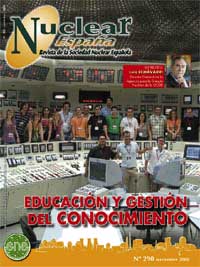 |
Finally, the December issue includes the report on the Annual General Meeting. It contained complete transcriptions of the opening, plenary and closing sessions and summarised the single issue and technical sessions. It aimed to give readers an idea of the range of topics addressed during the meeting. It also includes an article about the social events, the accompanying persons’ social programme and additional activities. Contact SNE for a copy of the latest issues.
During the anual meeting of the SNE in Murcia, FORATOM was invited to make a presentation to the WIN (Women in Nuclear). The presentation focused on the nuclear scenario in Europe and the different EU Member States positions on the nuclear issue. A special emphasis was given to the Energy Policy for Europe. Discussions also evolved around public perception and acceptance and the results of the last Eurobarometer on Radioactive Waste published in July 2008.
http://www.euronuclear.org/e-news/e-news-23/reactor-kinetics.htm

By Frigyes Reisch,
KTH, Royal Institute of Technology, Nuclear Power Safety
Stockholm, Sweden
At the 2008 ENS conferences, RRFM in Hamburg and NESTet in Budapest, sessions on reactor kinetics and related programmes – which were previously published in ENS NEWS - were well received. However, at these conferences it became clear that there is a need to run these programmes with a freely available code based on an open source. Octave www.octave.org is just such a code. However, this is not an elegant way to make a presentation, it is clumsy though economical. In the summer 2006 and spring 2008 issues of ENS NEWS the differential equations and the MATLAB programme were given. Below is the OCTAVE programme and the graphic results of both programmes are provided. Following on from this, the other MATLAB programmes described in the references can also be written in OCTAVE code and used freely.
The OCTAVE programme
function xdot = f (x, t)
DeltaK=3*0.010*0.50;
xdot = [(DeltaK/0.001-6.502)*x(1)+0.0124*x(2)+0.0305*x(3)+0.111*x(4)+0.301* x(5)+1.14*x(6)+3.01*x(7);
0.2150*x(1)-0.0124*x(2);
1.4240*x(1)-0.0305*x(3);
1.2740*x(1)-0.1110*x(4);
2.5680*x(1)-0.3010*x(5);
0.7480*x(1)-1.1400*x(6);
0.2730*x(1)-3.0100*x(7)];
endfunction
x0 = [1; 17.3387; 46.6885; 11.4775; 8.5316; 0.6561; 0.0907];
t = linspace (0, 0.2, 1000)’;
x = lsode ("f", x0, t);
plot (t, x(:,1))
print -deps foo.eps
OCTAVE
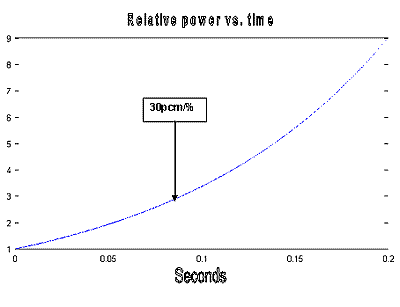
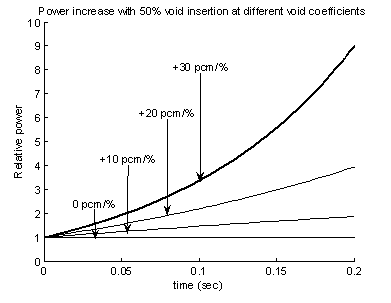
Acknowledgement
Thanks to Francesco Cadinu Ph.D. students at KTH for the Octave information.
Taming the Chernobyl Avalanche (2008 spring):
www.euronuclear.org/e-news/e-news-20/chernobyl-avalanche.htm
Calculation of the neutron flux, fuel and moderator temperature transients for Research Reactors (2008 spring):
www.euronuclear.org/e-news/e-news-20/neutron-flux.htm
Reactor Kinetics Equations applied to the start-up phase of a Ringhals PWR (2006 autumn):
www.euronuclear.org/e-news/e-news-14/pwr.htm
Neutron Kinetics of the Chernobyl Accident (2006 summer):
www.euronuclear.org/e-news/e-news-13/neutron-kinetics.htm
http://www.euronuclear.org/e-news/e-news-23/cop14.htm

United Nation COP14 (Conference of Parties of the United Nation Framework Convention on Climate Change (UNFCCC)) dealing with international policies on climate change took place in Poznan, Poland, from 1 - 12 December 2008. Around 10-15 thousand participants attended this major event, representing national delegations, NGOs and various observer organisations.
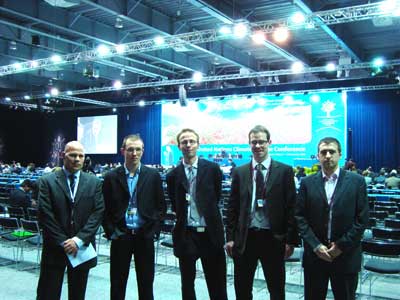
YGN delegation in the main negotiation room
The European Nuclear Society, together with the Young Generation Network, represented the nuclear community along with WNA/FORATOM and the IAEA. Both organisations had exhibition stands there within the main hall. They hosted many visitors and distributed an extensive amount of documentation. Five members of YGN in Europe, and beyond, made up the nuclear delegation: Igor Vukovic (Chairman of ENS-YGN, FER), Hans Korteweg (Chairman of IYNC, FORATOM), Wim Uyttenhove (Chair of the Belgian Nuclear Society YGN, SCKCEN) Alexey Lokhov (French Nuclear Society YGN, CEA) and Edouard Hourcade (Co-chairman of ENS-YGN, CEA).
Hundreds of applications were received from NGOs wanting to snatch up one of the 80 precious slots available for official side events over the 2 weeks. Eventually, organisers had to go through a drastic selection process and strongly encouraged that side events merge. ENS-YGN came up with an original format and was eventually selected as an official side event organizer.
Igor Vukovic kicked off the YGN side event with a presentation of ENS-YGN activities. Hans Korteweg continued with a technical speech entitled Climate change: can we do without nuclear? Hans discussed the carbon footprint of various energy sources and insisted on the great future that low carbon options such as nuclear energy promise.
Alexey Lokhov then gave a technical speech based on the French experience. It covered the following items:
current development of the nuclear fleet with 3rd generation reactors
current available fuel cycles
fourth generation fast reactors and their potential for fuel cycle closing
After the presentations, time was set aside for a long discussion with the audience, chaired by Wim Uyttenhove and Edouard Hourcade.
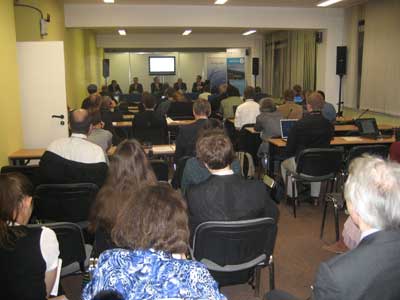
“Debating Nuclear and Climate Change” side event in Wild sheep room
The audience (roughly 50 people) was very diverse: several representatives of ecologist organisations were present (e.g. Greenpeace, WECF, etc.), as were delegates from Brazil, China and Belarus and other members of the nuclear “community” - like the WNA and the IAEA.
The questions asked focussed mainly on economical performance, the cost of the nuclear fleet, Generation IV development, safety and investment in other CO2 free energy sources…
This event organized by ENS-YGN was recognised as a success by many of the participants. We distributed a lot of greatly appreciated technical information and made it clear exactly what was at stake within the nuclear industry.
YGN would like to thank ENS, SFEN, CNS, BNS, SCKCEN, CEA and FER for their great support.
Edouard Hourcade
Co-chairman, ENS-YGN
http://www.euronuclear.org/e-news/e-news-23/sck-cen.htm
Nuclear is everywhere: underground and up in outer space! This was the theme of the two bilateral exchange visits organised in 2008 by the Dutch Young Generation (DYG) and Belgian Nuclear Society Young Generation (BNS-YG) chapters.
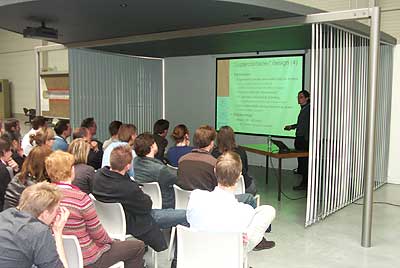
On May 23, a delegation of about 30 Dutch young nuclear professionals came to SCK-CEN in Mol, Belgium, to visit HADES, the underground laboratory used for research into the potential for disposing of highly-radioactive and long-lived waste in clay layers deep underground. Together with Belgian colleagues, they entered the laboratory, situated some 225 metres underground in the Boom Clay and covering an area of 200 metres. They aim was to see and discuss the different experiments going on down there. That evening there was also time set aside for socialising during the dinner that took place in nearby Antwerp.
On November 11, about 20 Belgian young nuclear professionals went to the European Space Research and Technology Centre (ESA-ESTEC) in Noordwijk, the Netherlands. Together with the DYG group, they attended a symposium about future of nuclear and the development of new research reactors and space applications. They also visited the laboratories at ESTEC and the Space Expo. After a very interesting day, a dinner was also organised, in the Dutch university city of Leiden.
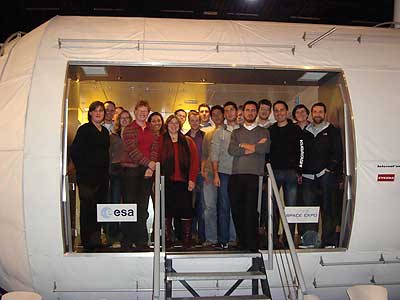
Such jointly organised technical visits are not only a unique opportunity to exchange viewpoints on specific nuclear themes, but also they create an enriching atmosphere for European young nuclear professionals to meet each other in an informal way. To be continued!
Wim Uyttenhove, Chairman of 2008-2010 BNS-YG (www.bnsorg.be/yg)
Pieter Kleerebezem, Chairman of the Dutch Young Generation
http://www.euronuclear.org/e-news/e-news-23/enygf09.htm

The European Nuclear Young Generation Forum, enygf09, which will take place form 19 - 23 May, will gather together young nuclear science and technology specialists from all over Europe. The Forum will hold discussions on the most topical and relevant issues related to the deployment of nuclear energy in Europe, such as politics, safety, new designs, transparency, public acceptance, waste management, construction, human resources, new applications, new projects, licensing and the economics of nuclear.
The main aims of this Forum are to train and encourage new leaders for the European nuclear sector and to create a platform for career development and networking among the young professionals.
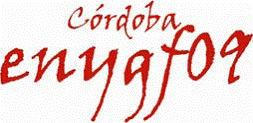
For these reasons, the technical programme of the Forum will feature a great number of different activities including plenary sessions, technical visits, debates and posters from the young members.

The technical programme was reinforced by the establishment a Programme Committee which is chaired by Luis Echávarri, Director-General, OECD’s Nuclear Energy Agency (NEA). It is made up of 40 experts from the European nuclear sector (industry, the European Commission, regulatory bodies, research centers, national societies, etc) who gave their views and opinions in order to strengthen the content of the technical programme.
 |
 |
The technical programme is as follows:
Plenary Session 1: The Role of the different stakeholders in the deployment of nuclear energy in Europe. Key People in the European nuclear sector will give their views on:
• Why nuclear now?
• Who & what for?
• What if not?
• What to do to “go nuclear?”
Plenary Session 2: The drivers of nuclear energy acceptance. Key people in the European nuclear sector and Political and European Institutions will give their views on:
• Nuclear safety and public acceptance
• Radioactive waste and public acceptance
• Nuclear politics and public acceptance
• Transparency and public acceptance
• The role of the young generation in public acceptance
Technical Visit: El Cabril.
We will visit the Spanish Low and Intermediate Level Waste Disposal Facility, at El Cabril. Since 1992, Spain has disposed of low-level radioactive wastes in concrete-lined structures near to the surface. El Cabril is a unique disposal facility that is located in the vicinity of Cordoba.
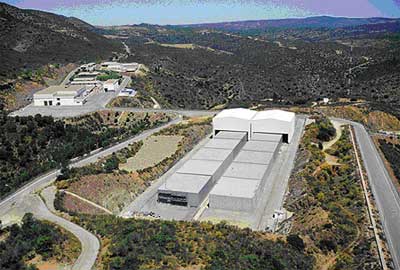
Plenary Session 3: Getting stronger: Crucial lessons. This will focus on lessons learnt, that have been chosen as the most important for young professionals. Reports will be given by top experts on the following topics:
• Life extension and its economic importance
• New designs and developments
• How to manage a nuclear project
• Economic factors of nuclear energy and its development

Plenary Session 4: Debate: Ethics and physics of the linear hypothesis.
This session will consist of a debate on the diverse consequences of the linear no threshold hypothesis. This hypothesis, which is used as a reference for developing legal standards, presupposes that the probability of stochastic effects caused by ionizing radiation is linear within all the range of low dose levels. Thus this hypothesis asserts that there is no threshold of exposure below which the response ceases to be linear with the dose and stands in contrast to theories that maintain that below a certain level radiation exposure is harmless or even positive.
• Physical foundations
• Social and political consequences
• Regulatory consequences
• Ethics of the linear hypothesis

http://www.euronuclear.org/e-news/e-news-23/nucnet-news.htm


3 Feb (NucNet): A new study of Dutch energy policy by the International Energy Agency (IEA) urges the government to take a decision on new nuclear build as soon as possible or risk creating uncertainty.
The publication*, ‘Energy Policies of IEA Countries – the Netherlands 2008 Review’, says it is “commendable that the government is beginning to consider whether nuclear could play a larger role in the country’s future energy mix”.
According to the publication: “Delaying a final decision until after 2011, while leaving time to build consensus, also leaves uncertainty about a technology that requires significant lead time to be planned, built and go on line. The government should come to a clearer position as early as possible, using the time to 2011 to create the necessary building blocks and regulatory framework to allow for a timely decision to be taken.”
IEA executive director Nobuo Tanaka said at yesterday’s launch of the publication that the Netherlands should work towards a “broad political consensus” on the future role of nuclear power in the country, keeping in mind that expanding nuclear energy “could make a significant contribution to meeting greenhouse gas emissions targets in a cost-effective manner”.
Mr Tanaka highlighted the country’s “demanding energy and climate agenda”, noting that it calls for a 30 percent reduction in greenhouse gas emissions by 2020 from 1990 levels, a 20 percent share of renewables in the energy mix by 2020 and annual energy efficiency improvements of 2 percent by 2020.
In February 2007, the incoming coalition government in the Netherlands said it endorsed an earlier agreement to keep the country’s only operational reactor unit (the single-unit Borssele) operating until 2033, although no new units would be built during the new government’s term of office.
In September 2008, Dutch utility Delta announced proposals to build a second reactor unit at Borssele that the utility said could be operational by 2016.
Political observers have noted that the coalition government is split on the subject of nuclear power. The Christian Democrats, under prime minister Jan-Peter Balkenende, have made strong calls for new nuclear build, while the Labour party and the Christian Union (the junior coalition partner) are anti-nuclear. The main opposition Socialist party has indicated that it is revising its traditional anti-nuclear stance “because the alternatives to nuclear are worse”.
*Details of how to order a copy of the publication (ISBN 978-92-64-04339-8) are available on the IEA’s on line bookshop (http://www.iea.org).
30 Jan (NucNet): A second European Pressurised Water Reactor (EPR) is to be built in France, president Nicolas Sarkozy announced last night.
Construction of Areva’s 1,600-megawatt third generation reactor unit is expected to start in 2012 at the existing Penly nuclear power plant site in northern France, which houses two pressurised water reactor units.
The new unit is expected to start operation by 2017. It will be the fifth EPR construction project initiated worldwide after those at Olkiluoto in Finland, Flamanville in France and Taishan-1 and -2 in China.
France’s Areva group today welcomed Mr Sarkozy’s announcement. The EPR reactor design had been selected for its economic and environmental performance and for a level of safety “unmatched in the market today”, Areva said.
A project management company will be established by Electricite de France (EDF) as a majority shareholder with GDF Suez and will be open to other investment partners. EDF will present details of the project for public debate in the coming weeks.
In December 2007, EDF announced the start of construction of the first EPR in France, Flamanville-3 in Normandy.
In February 2008, US nuclear regulators accepted for review an application to certify Areva’s US Evolutionary Power Reactor (US EPR) design.
The EPR is also one of the reactor designs submitted to UK regulators for generic design assessment as part of that country’s plans for nuclear new build.
29 Jan (NucNet): The European Commission (EC) has opened up a network of supercomputers for scientists researching nuclear fusion, which taps energy from reactions like those that heat the sun and could become “a potentially massive” new source of sustainable energy.
Scientists for the International Thermonuclear Experimental Reactor (ITER) nuclear fusion project will gain dedicated access to the processing power of Europe’s consortium of supercomputing centres: the Distributed European Infrastructure for Supercomputing Applications (DEISA). DEISA currently operates 12 of the world’s 100 most powerful supercomputers.
Access to these computers will allow scientists to carry out complex parts of their work, such as simulations of a fusion reactor’s operation, the EC announced on 26 January 2009.
“We expect the new partnership between the supercomputing services of DEISA and the European nuclear fusion community to make an enormous contribution to nuclear fusion’s potential as a viable energy source and power Europe’s role in this quest,” said information society and media commissioner Viviane Reding in a statement. “This shows how pooling its best scientists and infrastructures helps Europe’s scientific community remain at the forefront of global research.”
Controlled nuclear fusion, the process that releases energy in stars and the sun, has the potential to provide a sustainable form of power generation, said the EC. The ITER project, a collaboration between nuclear researchers from the European Union, Japan, China, India, South Korea, Russia and the US, aims to develop the means to build a fusion reactor at Cadarache, in the south of France. Europe is the leading partner in ITER, contributing near half of the total resources both in terms of personnel and funding.
“Large-scale simulations of nuclear fusion and material properties on cutting-edge supercomputers are essential to the operation and design of present and future fusion experiments,” said Professor Frank Jenko from the Max Planck Institute for Plasma Physics.
Dr. Hermann Lederer, head of application support at the German Supercomputing Centre RZG, said essential simulations can now be performed “with the full power of modern supercomputers”.
DEISA, which was granted 26 million euro (33 million US dollars) by the EC to use between 2004 and 2011, uses the Géant computer network to distribute and share Europe’s supercomputer processing power. Géant is a European multi-gigabit communications network used exclusively for research and academic purposes.
http://www.euronuclear.org/e-news/e-news-23/other-conferences.htm

The first International Conference on Advancements in Nuclear Instrumentation, Measurement Methods and their Applications ANIMMA will take place 7-10 June, 2009, at the Convention Centre of Marseille, in southern France.
The aim of the conference is to bring together scientific, academic and industrial communities interested in, or actively involved in research and developments related to nuclear instrumentation and measurement methods.
The program is focused on instrumentation, but emphasizes the latest developments in all measurement stages: nuclear radiation detection and in-pile measurements, modelling, electronics, signal acquisition and analysis, interpretation and associated training/education activities.
ANIMMA offers an outstanding opportunity for scientists and engineers to meet and discuss new ways to address complex problems and find advanced solutions in nuclear instrumentation and measurement sciences and technologies.
Important deadlines:
January 21, 2009 |
Abstract Submission (700-1000 Words) |
Questions regarding the technical program should be addressed by e-mail to animma@cea.fr
![]()
8
- 11 February 2009
Hyatt Regency Riverfront Hotel in Jacksonville,
Florida, USA
E-mail: jleclair@excelsior.edu
www.conte09.com/

6th American Nuclear Society International Topical Meeting on Nuclear Plant Instrumentation, Controls, and Human Machine Interface Technology
5 - 9 April 2009
Knoxville, Tennessee, USA
Richard Wood
ORNL
Tel:
(865) 574-5578
E-mail: woodrt@ornl.gov
meetingsandconferences.com/npic-hmit-2009/index.html
International Conference on Nuclear Engineering
12 - 16 July 2009
Sheraton Brussels Hotel, Brussels, Belgium
www.asmeconferences.org/icone17/
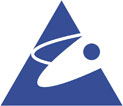
18th International Conference
14 - 17 September 2009
Bled, Slovenia
www.nss.si/bled2009/

13th International Topical Meeting on Nuclear Reactor Thermal Hydraulics
27 September - 3 October 2009
Kanazawa, Japan
Atomic Energy Society of Japan
3-7, Shimbashi 2-chome
Minato-ku
Tokyo 105-0004, Japan
Tel: +81-3-3508-1261
E-mail : atom@aesj.or.jp
www.nureth13.org/

15 - 19 November 2009
Washington, DC
United States of America
American Nuclear Society Meetings
Department,
555 North Kensington Avenue, LaGrange Park,
IL 60326, USA
Tel: +1 (708) 352-6611
Fax +1 (708) 352-6464
E-mail meetings@ans.org
/www.ans.org

9th International Conference on Tritium Science and Technology
24 - 29 October 2010
Nara, Japan
National Instiute for Fusion Science Safety and Environmental Research
http://www.euronuclear.org/e-news/e-news-23/Member-Societies.htm

Austrian
Nuclear Society |
Belgian
Nuclear Society |
Bulgarian
Nuclear Society |
Croatian
Nuclear Society |
Czech Nuclear Society |
Finnish
Nuclear Society |
French
Nuclear Energy Society (SFEN) |
German
Nuclear Society (KTG) |
Hungarian
Nuclear Society |
The
Israel Nuclear Society |
Italian
Nuclear Association |
Lithuanian
Nuclear Energy Association |
Netherlands Nuclear Society |
The Nuclear Institute |
Nuclear
Society of Russia |
Nuclear
Society of Serbia |
Nuclear
Society of Slovenia |
Polish
Nuclear Society |
Romanian
Nuclear Energy Association (AREN) |
Slovak
Nuclear Society |
Spanish
Nuclear Society |
Swedish
Nuclear Society |
Swiss
Nuclear Society |
http://www.euronuclear.org/e-news/e-news-23/Corporate-Members.htm
Links to ENS Corporate Members
|
http://www.euronuclear.org/e-news/e-news-23/editorial.htm
Mark O’Donovan, Editor-in-Chief
Contributors to this Issue:
Helmut Böck ( Atominstitut, Vienna)
David Bonser (ENS)
David Dalton (NucNet)
Frank Deconinck (VUB)
Kirsten Epskamp (ENS)
Edouard Hourcade (YGN)
R. Khan ( Atominstitut, Vienna)
Pieter Kleerebezem (YGN)
Frigyes Reisch (KTH)
Clive Smith (Cogent)
Andrew Teller (Areva)
Wim Uyttenhove (YGN)
Realisation:
Marion Brünglinghaus
Rue Belliard 65, BE-1040 Brussels
Phone +32 2 505 30 50 - Fax: +32 2 502 39 02
E-mail: info@euronuclear.org - http://www.euronuclear.org
The ENS News is a quarterly publication, in electronic
form only.
Copyright notice ©2009 European Nuclear Society.
Reproduction is authorised provided that the ENS News is acknowledged as the
source – except where otherwise stated.
![]()
© European Nuclear Society, 2009